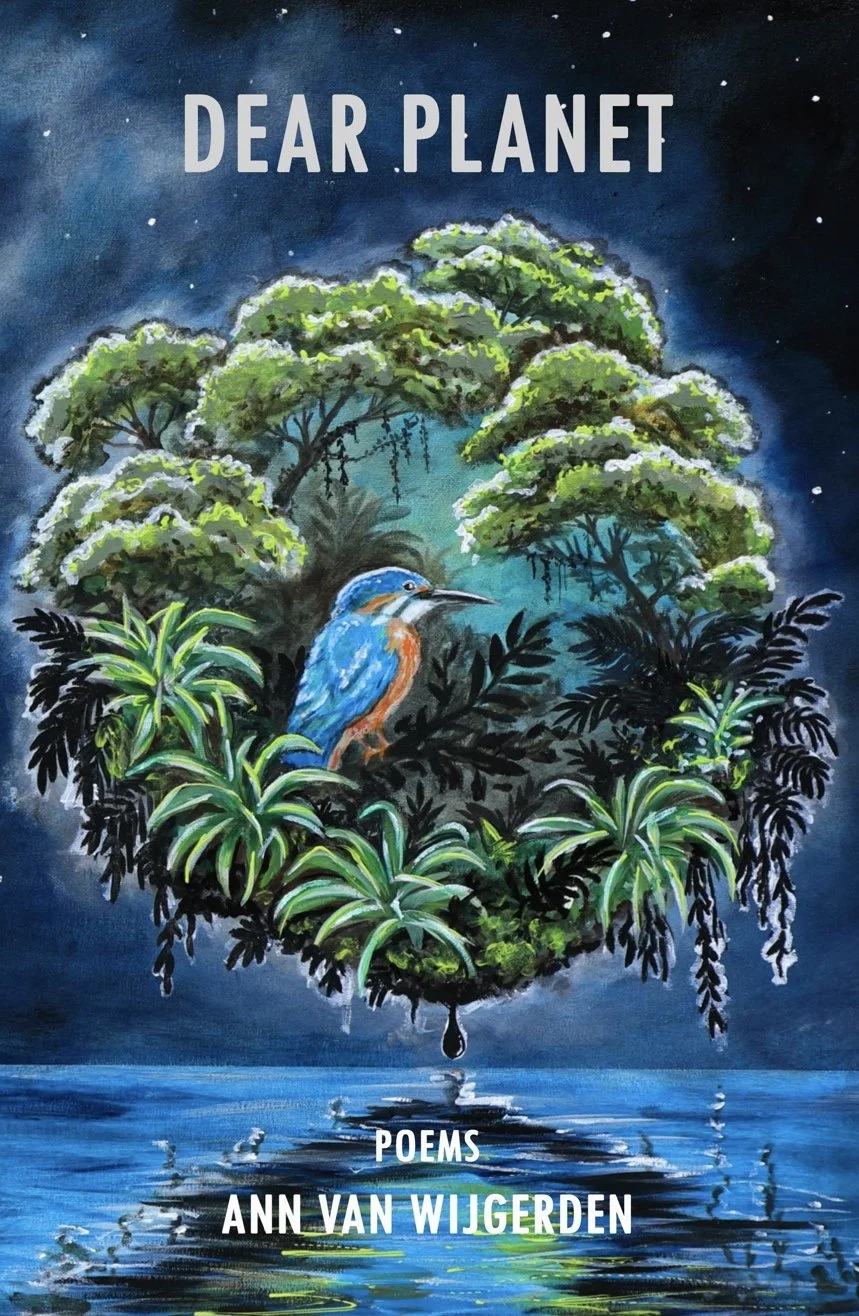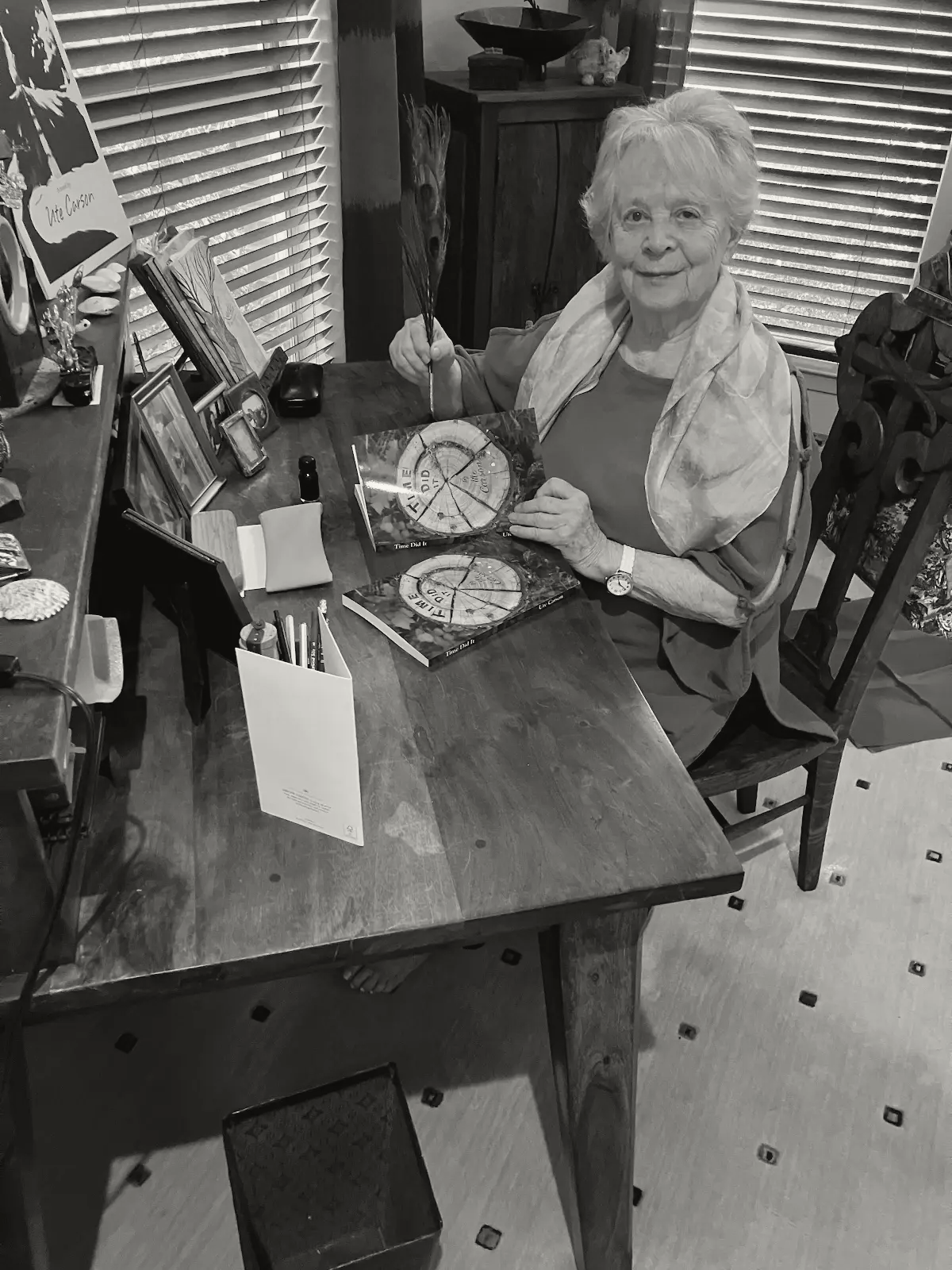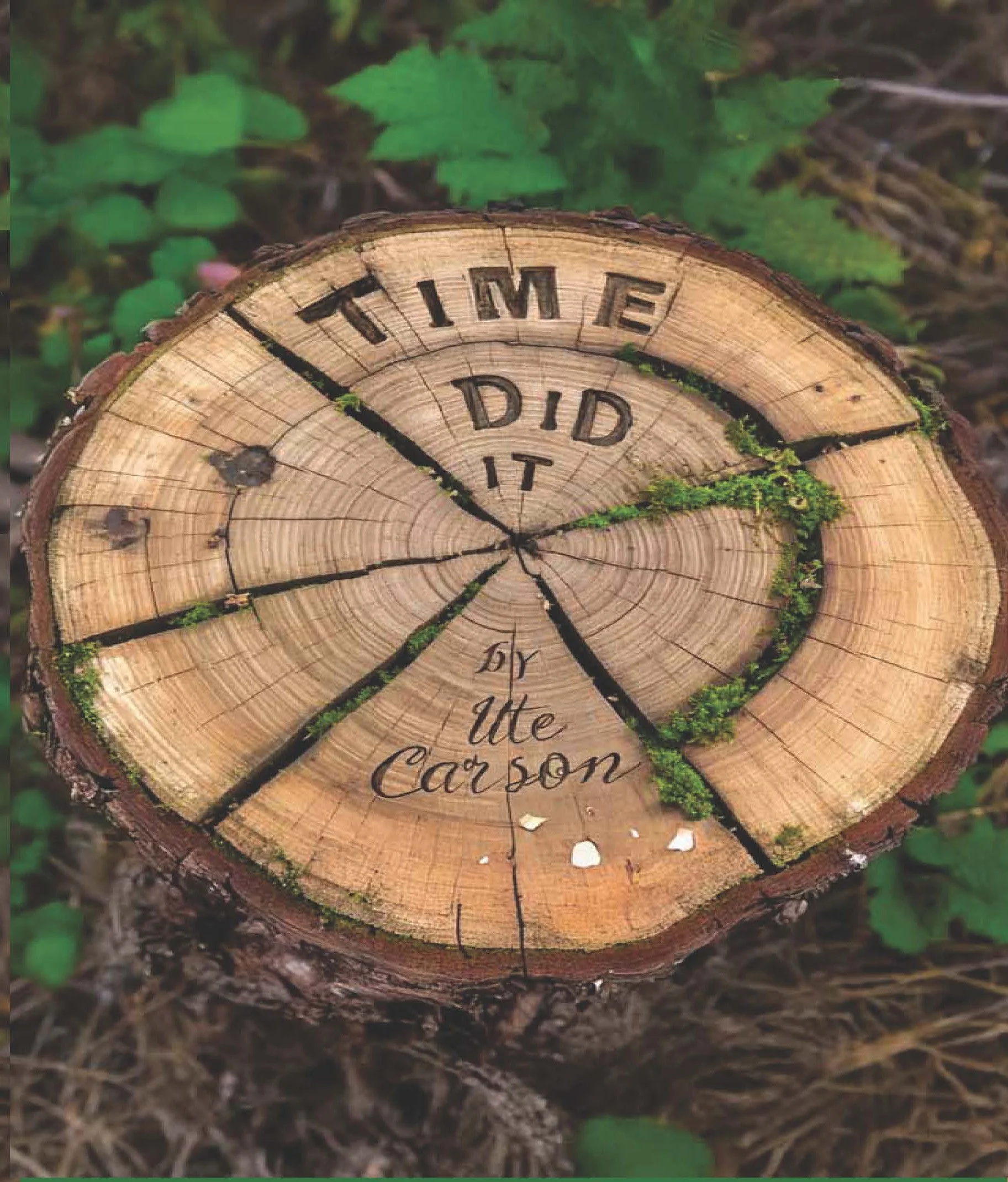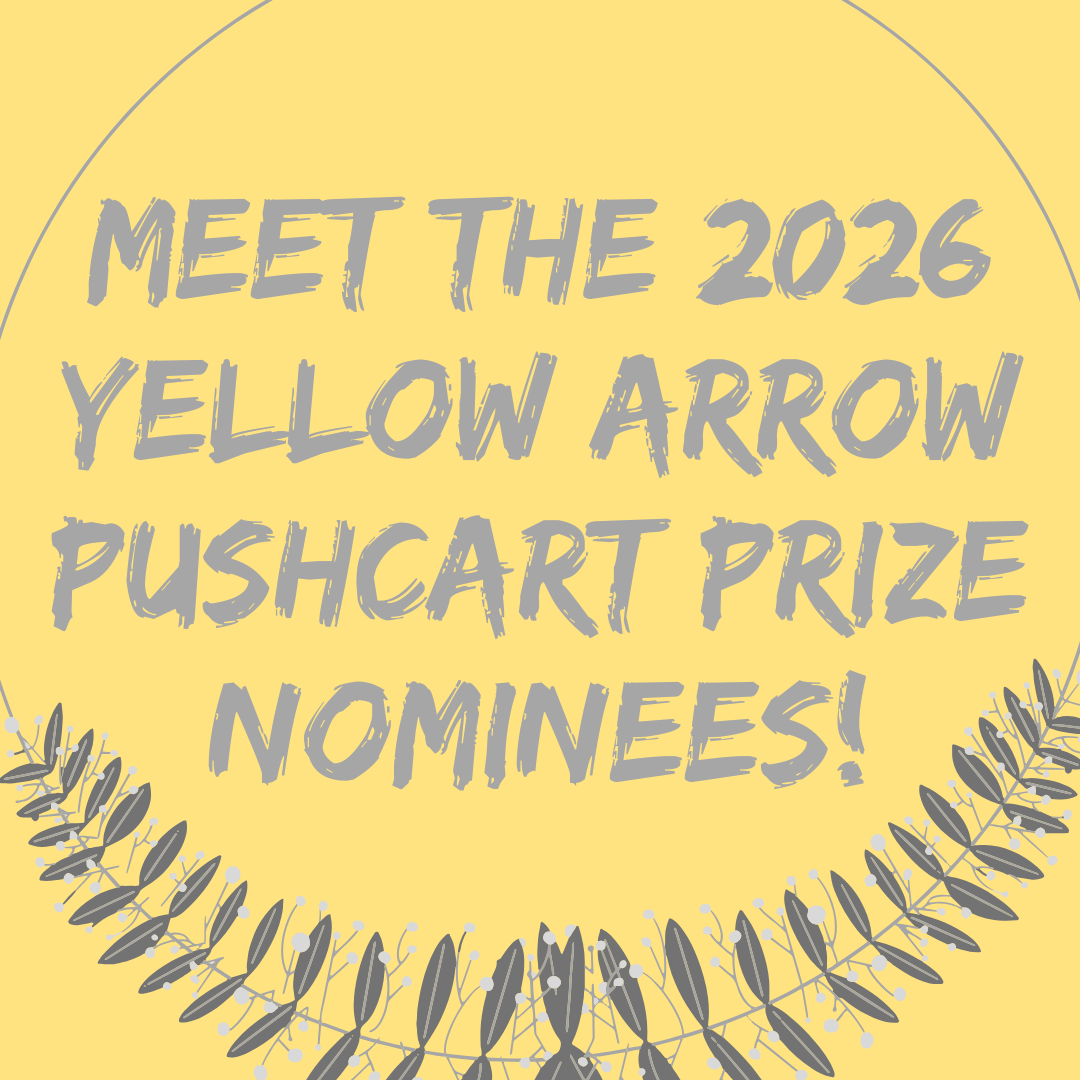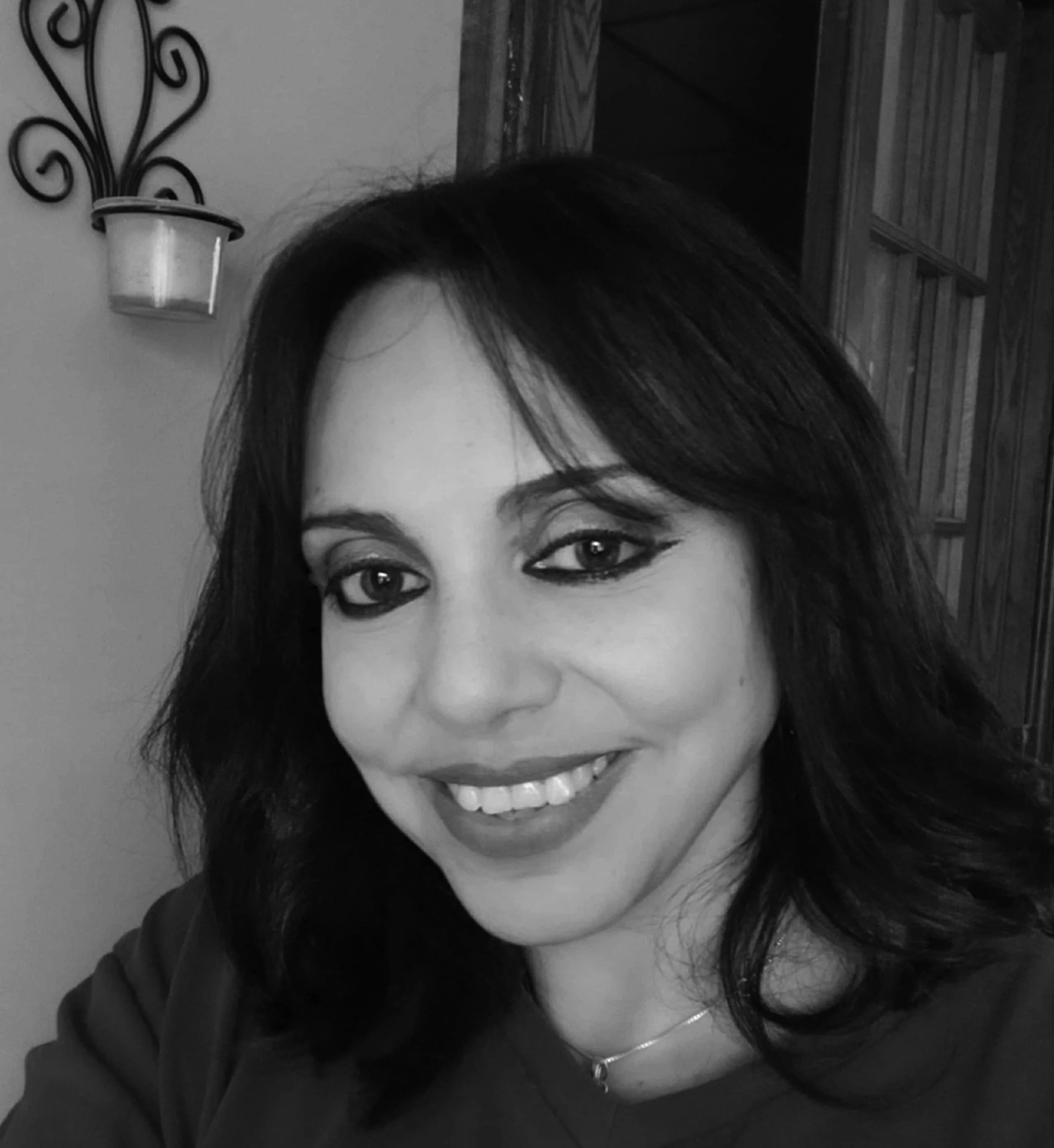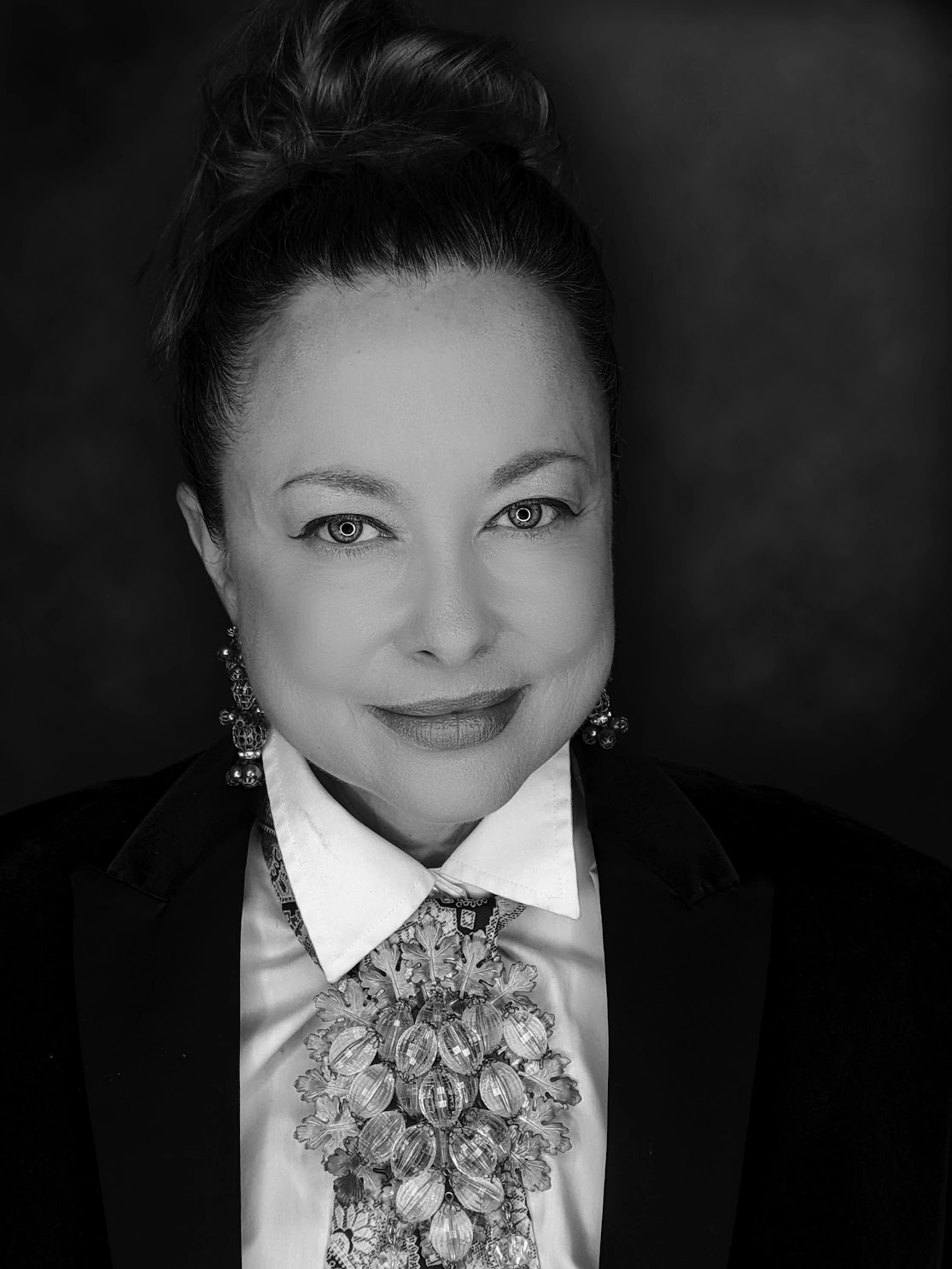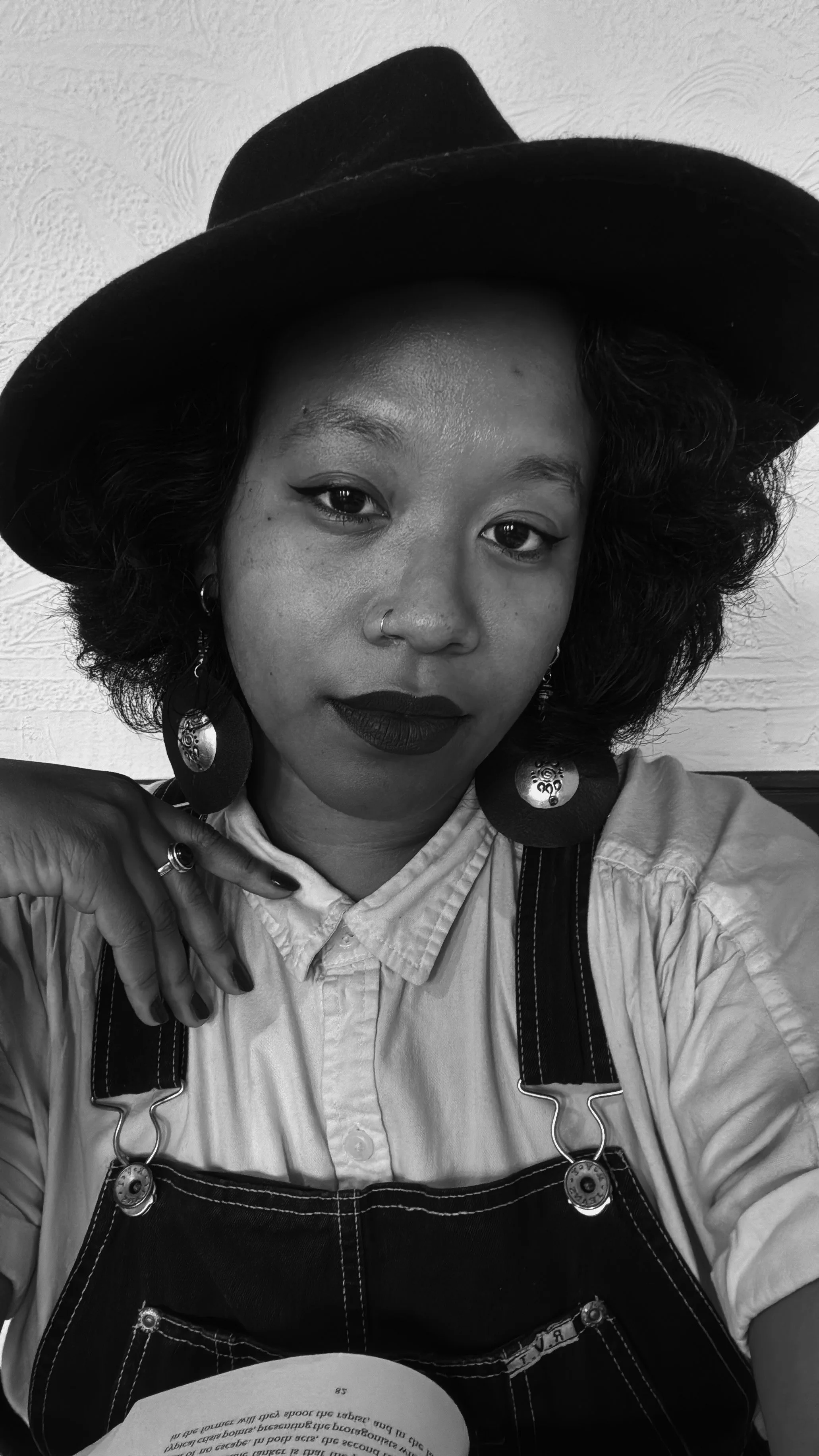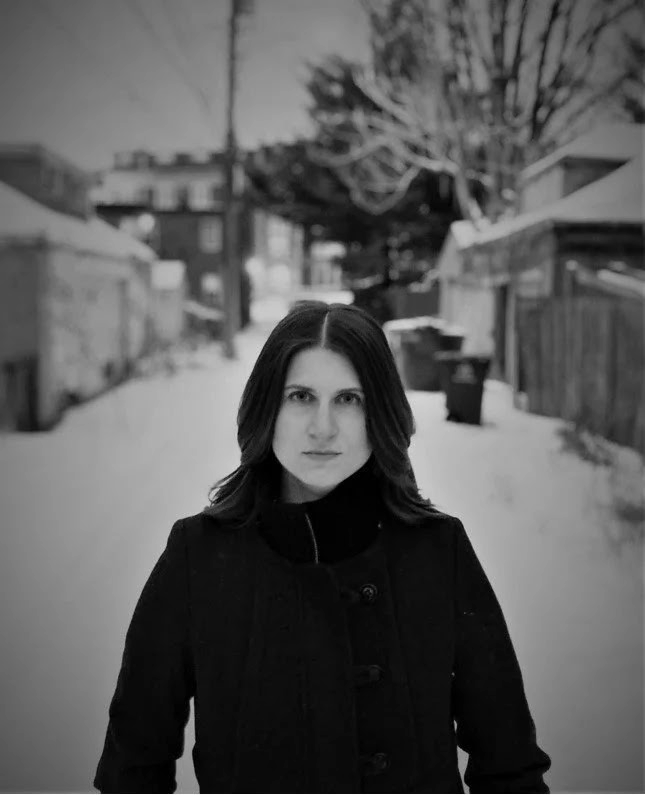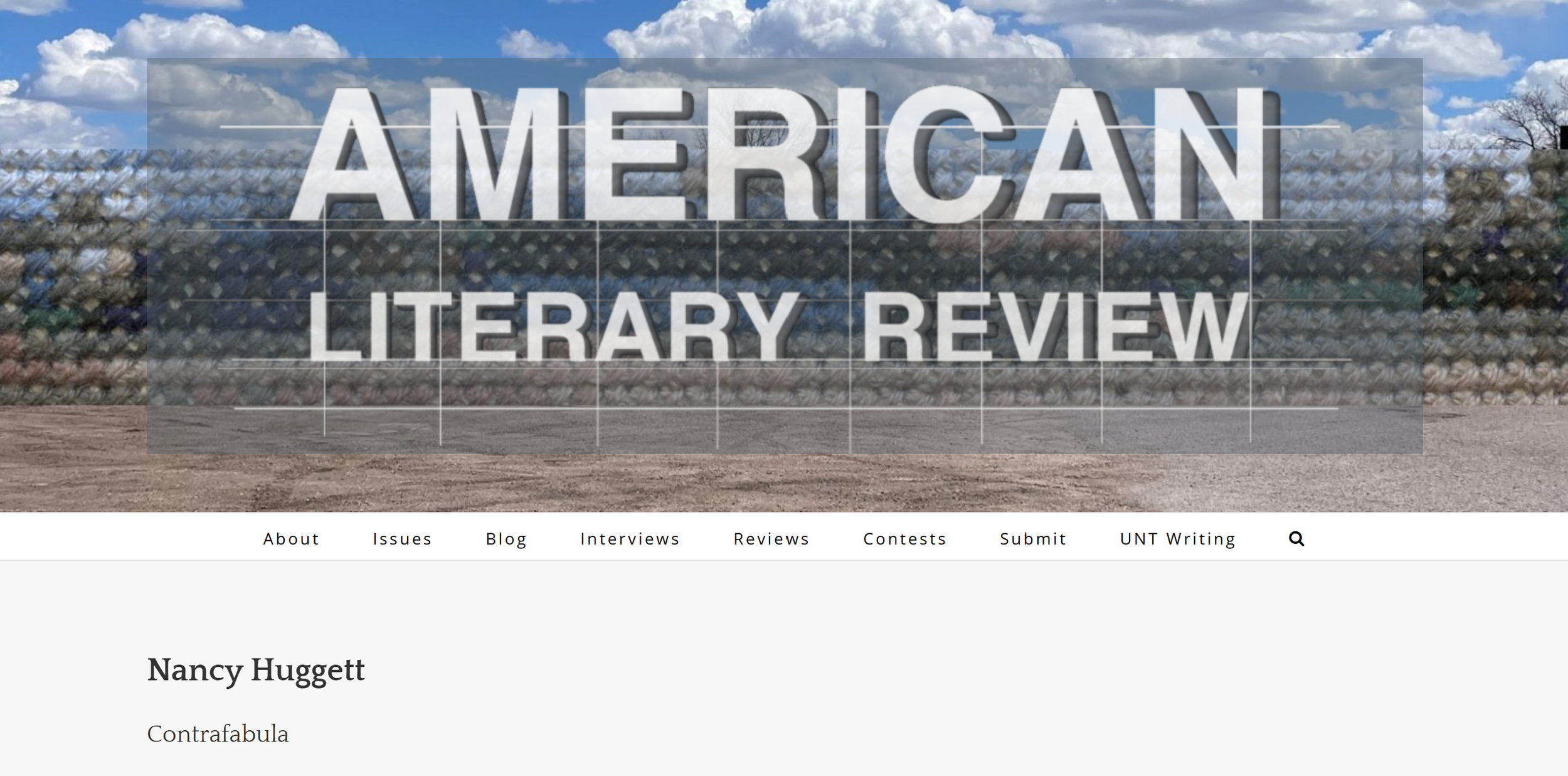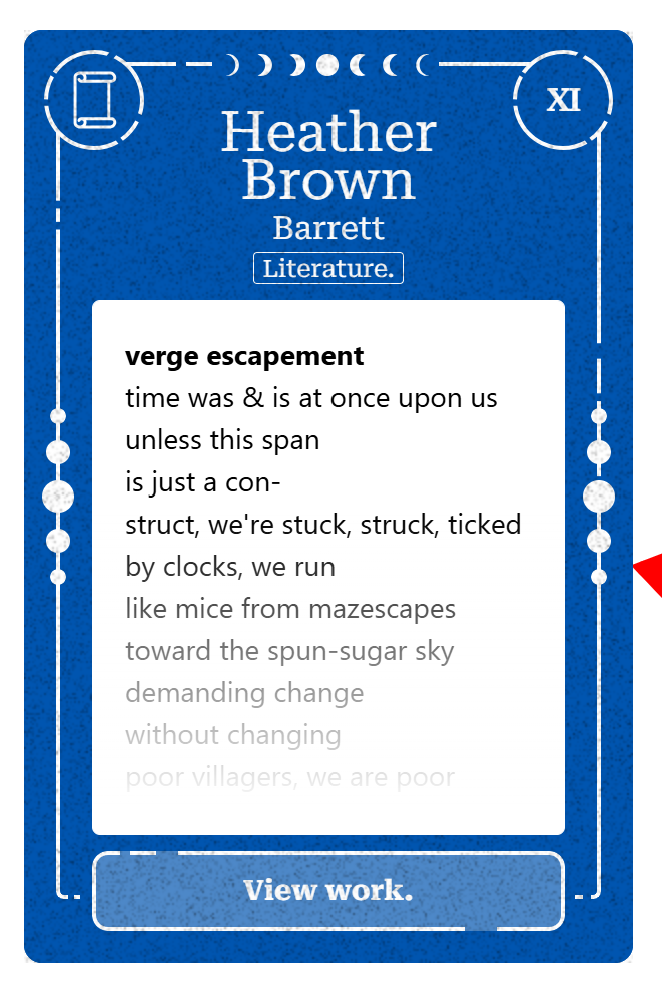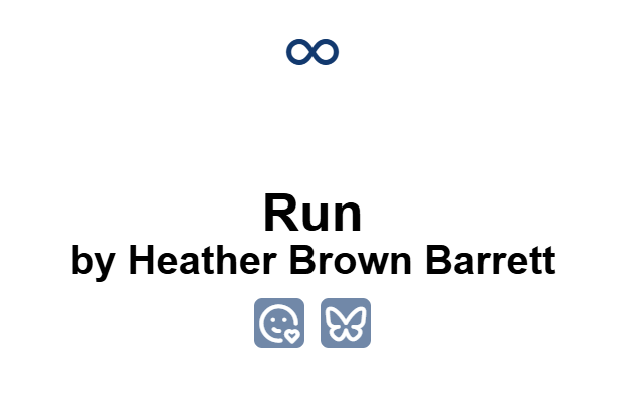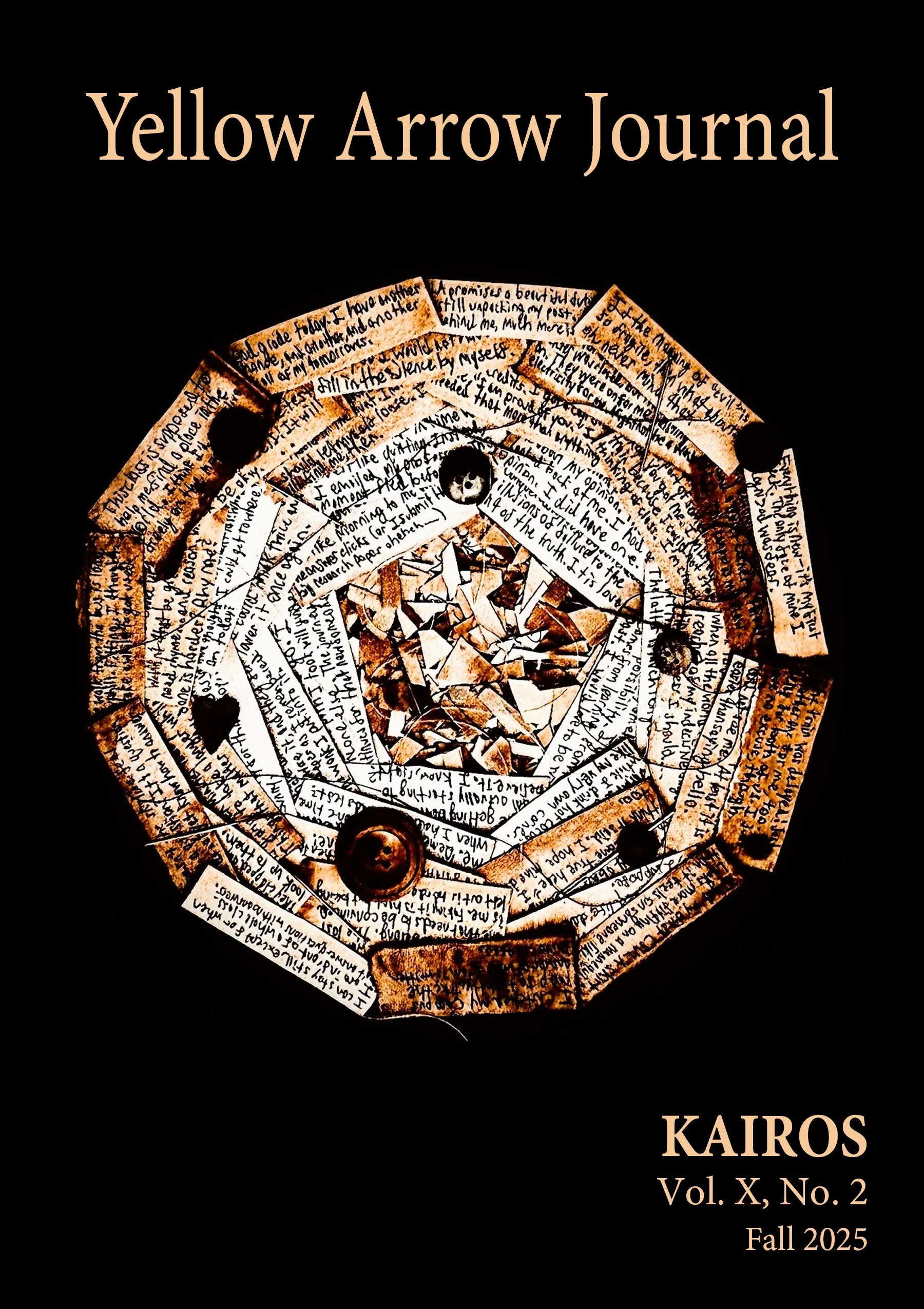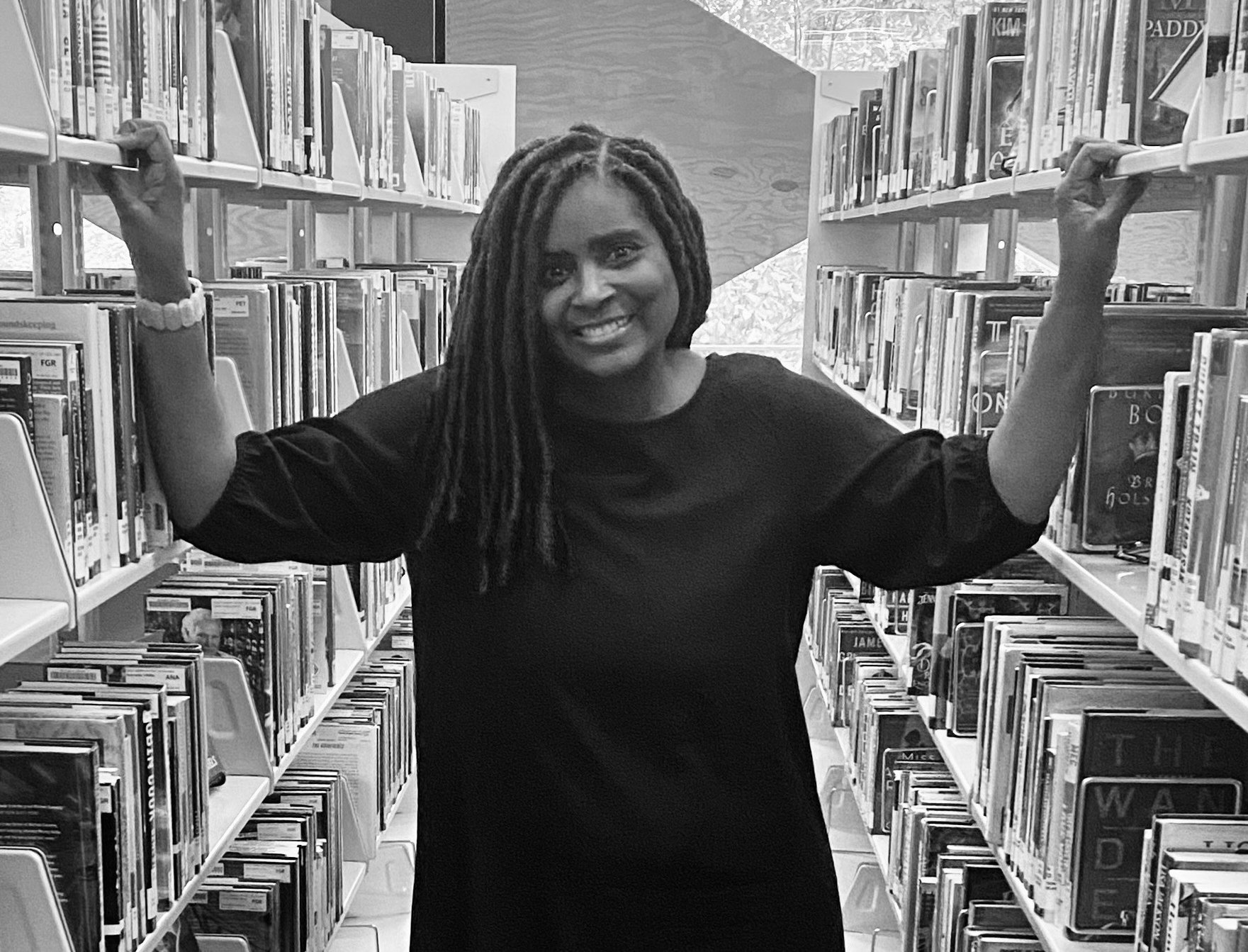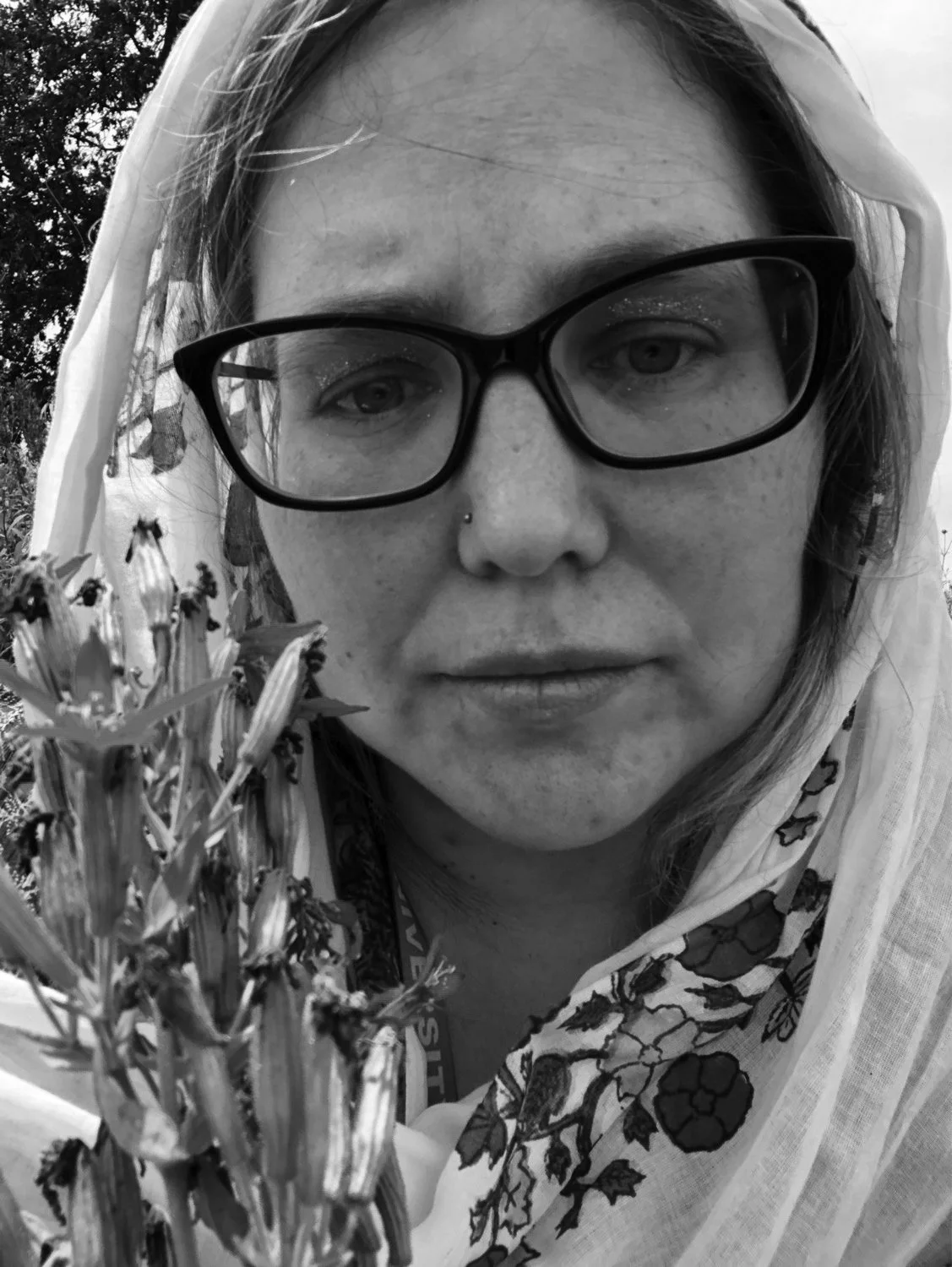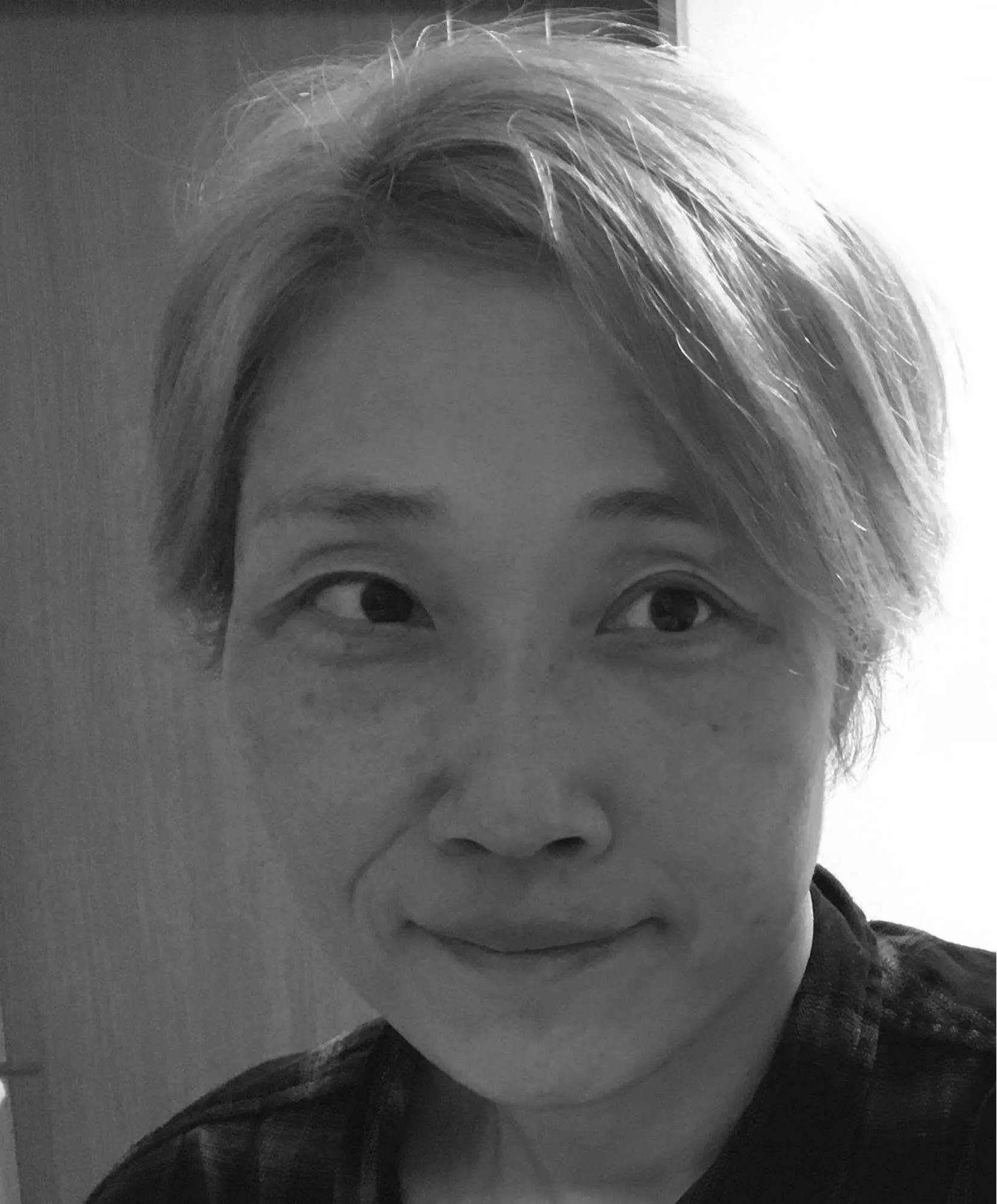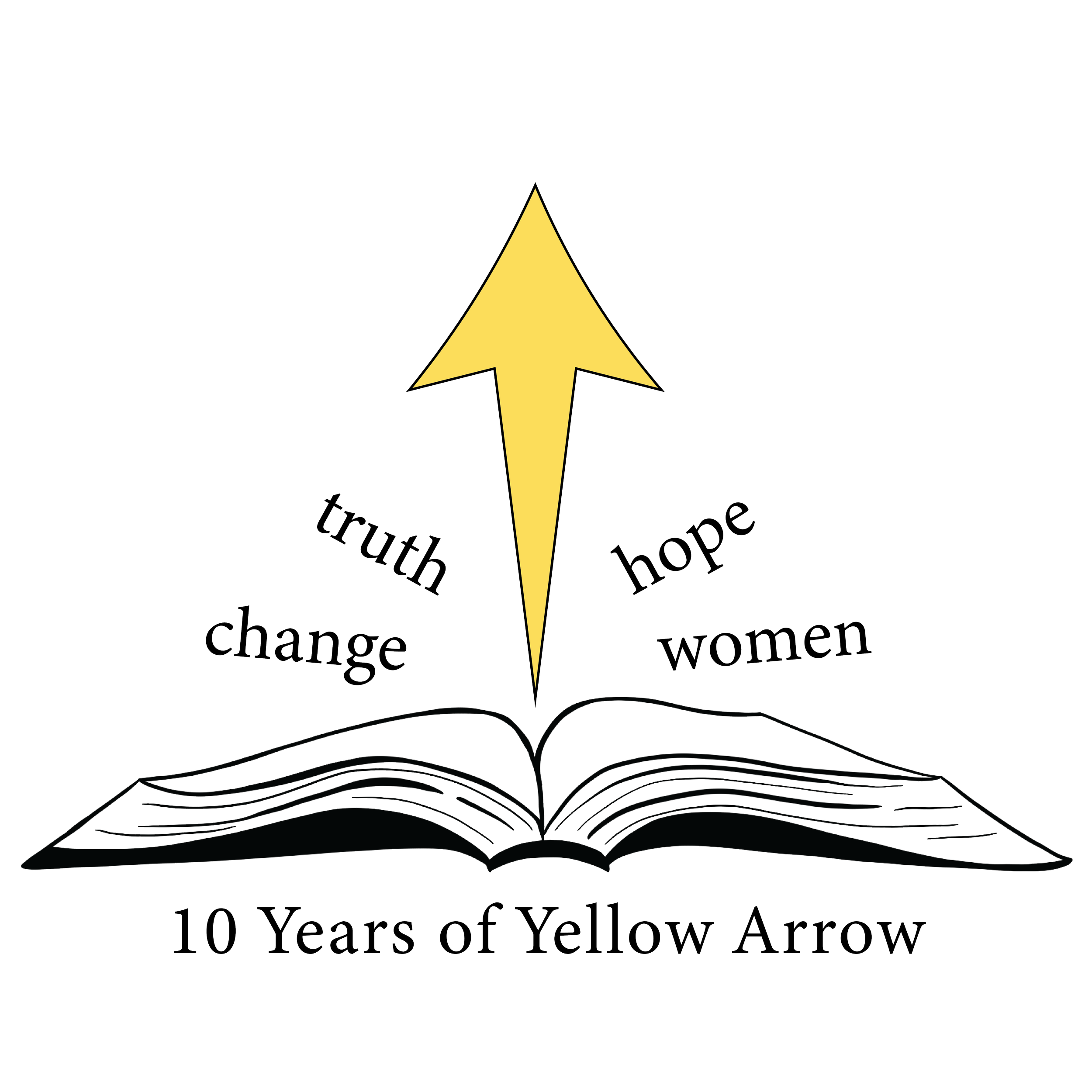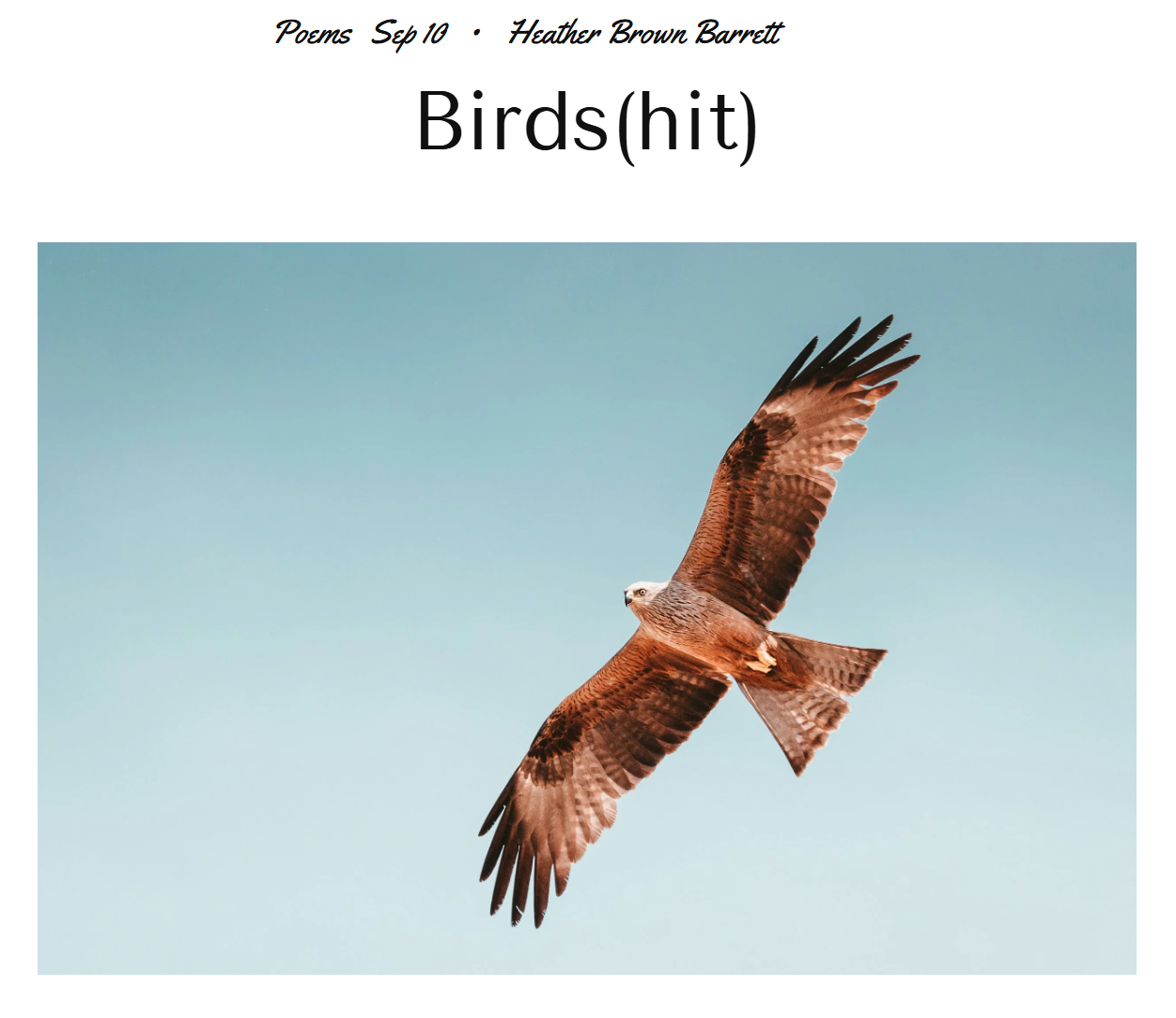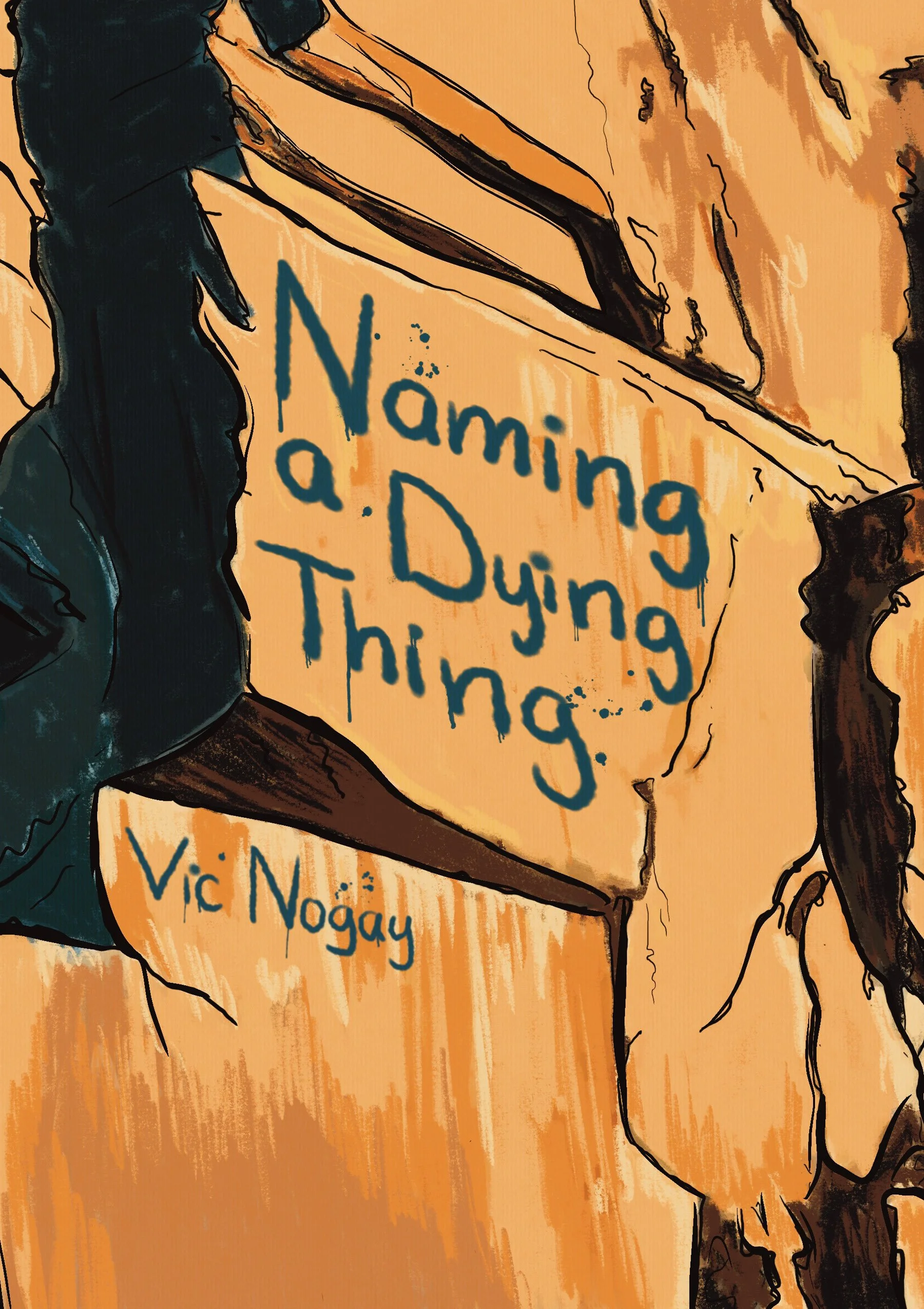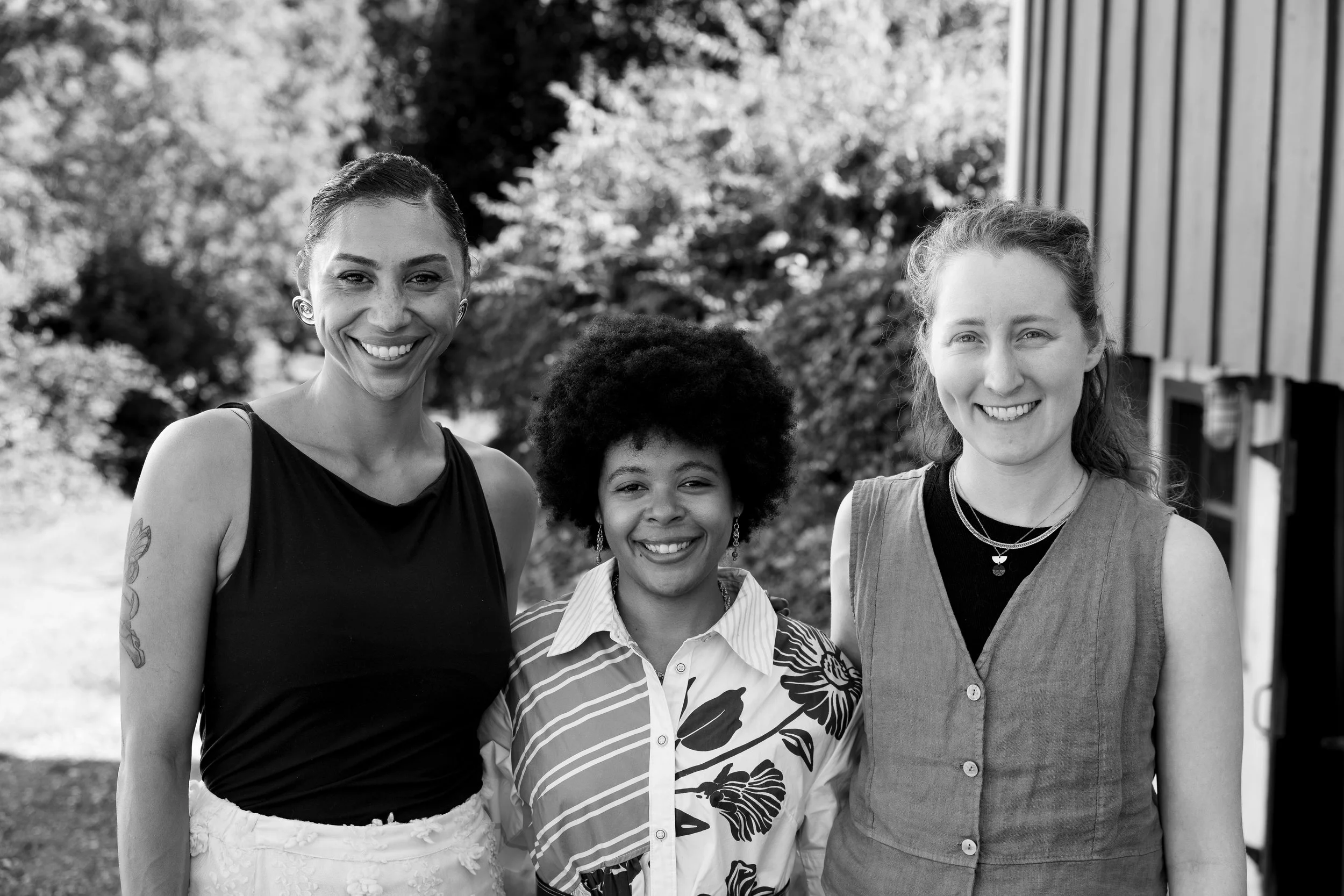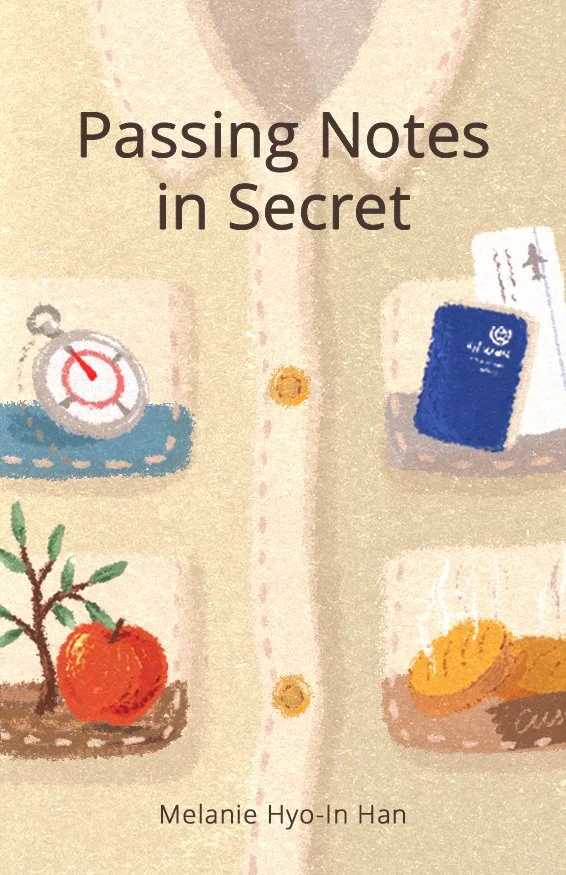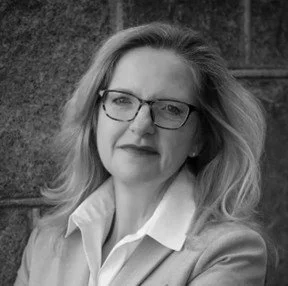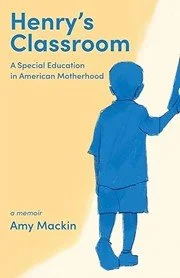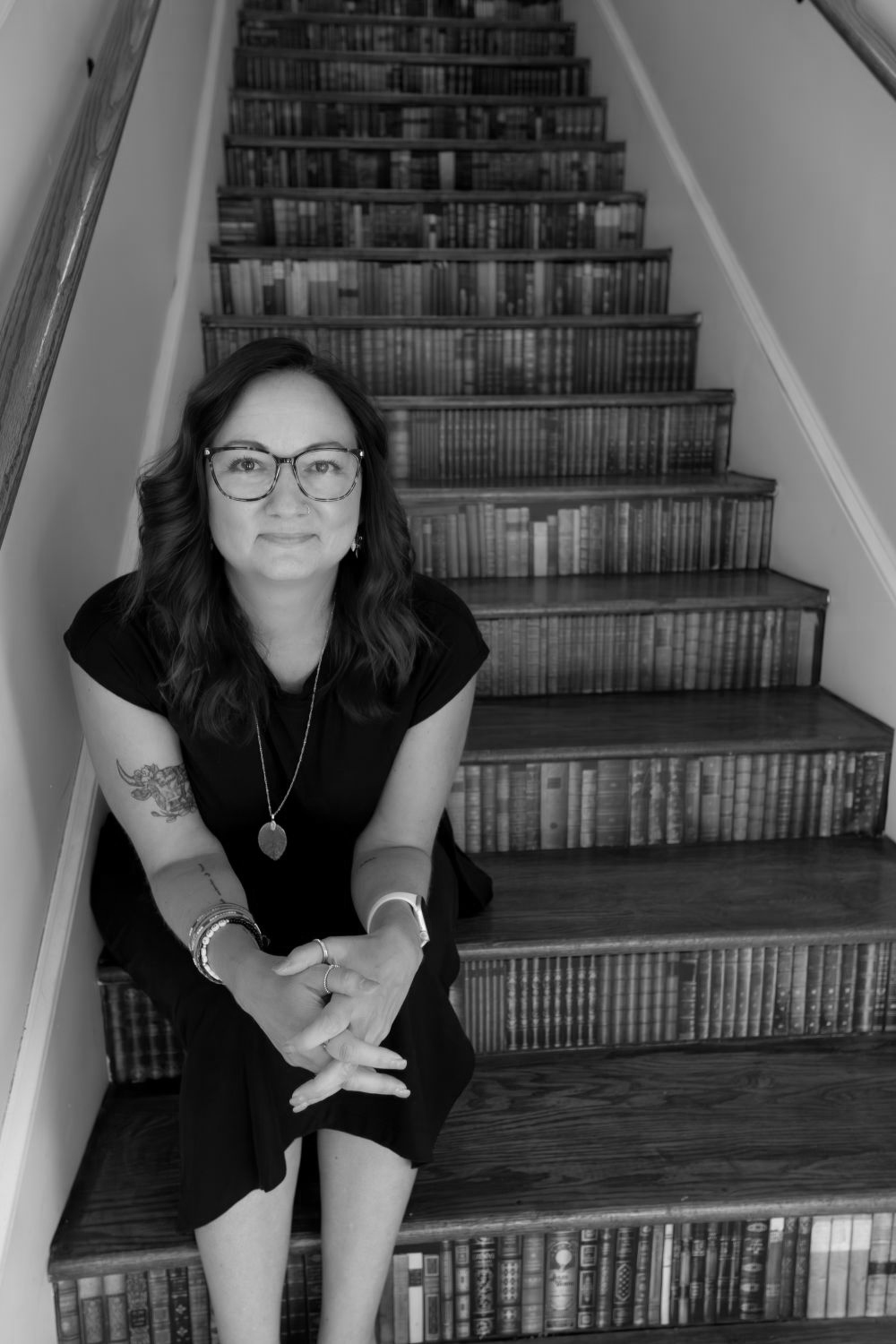
Yellow Arrow Publishing Blog
Her View Friday
Yellow Arrow Publishing supports women-identifying writers from a wide variety of backgrounds, not just because it’s the right thing to do, but because it makes us stronger. Women’s voices have historically been underrepresented in literature, and we aim to elevate those voices and stories through our programs, publications, and support.
Part of our mission in supporting and uplifting women writers is to promote the Yellow Arrow community’s individual accomplishments. We’d like to further expand that support and promotion outside of our Yellow Arrow publications. Twice a month, we’d like to give a shout out to those within the Yellow Arrow community who recently published:
single-author publications
single pieces in journals, anthologies, etc., as well as prizes/awards, book reviews, and podcasts/interviews
You can support our authors by reading this blog and their work, sharing their news, and commenting below or on the blog. Congratulations to all the included authors. We are so proud of you!
Every writer has a story to tell and every story is worth telling.
Author: Ann van Wijgerden
British by birth, Ann van Wijgerden lives in the Netherlands and the Philippines. She’s had nonfiction, poetry, and fiction accepted in numerous magazines, including Orion, Orbis, The Sunlight Press, The Wild Umbrella, and Queen’s Quarterly and is a 2025 Best of the Net nominee. Her debut poetry collection Dear Planet was published by Fidessa Literary, July 2025. Ann cofounded and works for an NGO called Young Focus (youngfocus.org) in Manila.
Where are you from: London, England
Tell us about your main writing space in three words: cozy, quiet, green
Tell us about your publication: This is my debut poetry collection. Dear Planet tracks one Englishwoman’s journey, straddling life between the U.K., the Netherlands and the Philippines; poems are her stepping-stones as she tries to reconcile herself to the reality of different worlds, worlds divided by location, social status, even time.
There are universally relatable themes, such as the loss of loved ones, wrestling with health and aging, getting comfortable with uncertainty, love of nature. But the poetry also speaks from a unique perspective, offering glimpses of a world many may not know; that of the social injustice of extreme poverty and the “Drug War” in the Philippines.
Along the way, there is much hope and tenderness, too. Perhaps you’ll be, as Ann has been, inspired by the resilience of fellow humans, as well as comforted by our kinship with the natural world, with this dear planet.
Why this book? Why now? How did it happen? The poem “Dear Planet,” published by Yellow Arrow Publishing, became the theme and the title of the collection (as well as the first poem). The publisher Fidessa is also now partnering with our NGO Young Focus in the Philippines. You can find out more at fidessaliterary.com/dearplanetproject.
What advice do you have for new writers? Someone with a book that needs a home? Keep looking for a good home for your book. Don’t give up. (It took me almost two years.)
What else are you working on/doing that you’d like to share? Writing reflections/blog posts based on poetry and prompts, especially from the amazing poet Pádraig Ó Tuama and his Poetry Unbound Substack. Also, more poetry for the next collection . . .
Author: Ute Carson
Ute Carson has been a writer since youth. She has published widely and was nominated three times for the Pushcart Prize. She lives with her husband in Austin, Texas. They have three daughters, six grandchildren and a clowder of cats.
Where are you from: Germany
Tell us about your main writing space in three words: cluttered and sun- and moon-lit.
Tell us about your publication: Time Did It was published October 24, 2025, by Plain View Press in Austin, Texas. The memoir is a family saga bedded in a historical context.
Why this book? Why now? How did it happen? The book speaks to the circle of life and the connection of one generation to the other. It also tells about the importance of a historical settling like the two world wars.
What advice do you have for new writers? Someone with a book that needs a home? Young writers need to search and search until they find the nook that is just right for them.
What is your writing goal? My writing goal for the year is writing more stories and poems.
Yellow Arrow (past and present) board, staff, interns, authors, residents, and instructors alike! Got a publication coming out? Let us help celebrate for you in Her View Friday.
Single-author publications: here.
Single pieces as well as prizes/awards, book reviews, and podcasts/interviews: here.
Please read the instructions on each form carefully; we look forward to congratulating you!
*****
Yellow Arrow Publishing is a nonprofit supporting women-identifying writers through publication and access to the literary arts. You can support us as we BLAZE a path for women-identifying creatives this year by purchasing one of our publications or a workshop from the Yellow Arrow bookstore, for yourself or as a gift, joining our newsletter, following us on Facebook or Instagram, or subscribing to our YouTube channel. Donations are appreciated via PayPal (staff@yellowarrowpublishing.com), Venmo (@yellowarrowpublishing), or US mail (PO Box 65185, Baltimore, Maryland 21209). More than anything, messages of support through any one of our channels are greatly appreciated.
Meet the 2026 Yellow Arrow Publishing Pushcart Prize Nominees
The Pushcart Prize honors the incredible work of authors published by small presses and has since 1976. And since then, thousands of writers have been featured in its annual collections—most of whom are new to the series. The Pushcart Prize is a wonderful opportunity for writers of short stories, poetry, and essays to jump further into the literary world and see their work gain recognition and appreciation.
The Prize represents an incredible opportunity for Yellow Arrow Publishing to further showcase and support our authors. Our staff is committed to letting our authors shine. Every writer has a story to tell and every story is worth telling. We are so proud of everyone we publish at Yellow Arrow. Without further ado, let’s meet the 2026 Yellow Arrow Pushcart Prize Nominees!
Emily Decker
“Finding Home in a Villanelle”
from Homing: Poems
~ i found you once between the creases,
and i’ll find you again, just in pieces. ~
Emily Decker is a writer in Baltimore, Maryland. Her poems have appeared in Yellow Arrow Journal, Full Bleed, Hole in the Head Review, and Campfire Stories: Chesapeake Bay. Her debut collection Homing: Poems is available through Yellow Arrow. She holds a bachelor’s degree in literature and a master’s degree in secondary English education from Georgia State University. When she’s not writing or reading, she is usually out on the Chesapeake Bay, on or behind a stage, or plotting her next adventure. Follow Emily on Instagram @emadeck or at emilydeckerpoetry.com.
Johanna Elattar
“Under the Siren: Alexandria, 1973”
from Yellow Arrow Journal Vol. X, No. 2, KAIROS
~ The siren taught me silence. But the cake, the song, the mimed applause—they taught me something stronger. Joy doesn’t need permission. It can whisper and still survive. ~
Johanna Elattar is a writer from Brooklyn whose work explores memory, faith, and resilience through intimate, character-driven storytelling. Influenced by early childhood experiences in Alexandria and a life shaped by displacement, survival, and devotion to truth, she writes toward quiet revelations and the subtle moments that define a life. Her writing has appeared in Yellow Arrow Journal, Lunch Ticket, Muslim Matters, and other publications, and she was recently featured in an Oxford University Press anthology. Elattar believes in the dignity of ordinary lives, the endurance of the human spirit, and the duty to bear witness. She currently lives in upstate New York with her rescue animals and is at work on a novella.
Johanna contributed her creative nonfiction piece “Under the Siren: Alexandria, 1973” to Yellow Arrow Journal Vol. X, No. 2, KAIROS, and can be found in the Yellow Arrow bookstore.
Ann marie Houghtailing
“Little by Little”
from Little by Little
~ Even the wisdom was small
Three words
you could fit into the palm of your hand ~
Ann marie Houghtailing has a graduate’s degree (ALM) in American literature from Harvard University Extension. She has delivered a TEDx Talk entitled Raising Humans, and performed her critically acclaimed one woman show, Renegade Princess, in New York, Chicago, Santa Fe, San Francisco, and San Diego. Houghtailing is a visual artist and cofounder of the firm Story Imprinting. Her writing has appeared in the Washington Post, Huffington Post, Daily Worth, XO Jane, San Diego Business Journal, Yahoo! Finance, and Thought Catalog.
Ann marie’s chapbook Little by Little was released in April 2025 and can be found in the Yellow Arrow bookstore.
Majiq Vu Mai
“The Metamorphosis”
from Yellow Arrow Journal Vol. X, No. 1 UNFURL
~ What could small flying creatures like us do after a life shaking fall like that, but take our time? ~
Majiq Vu Mai (magic/they/he/we) is a multiplicity of madness, writing themselves alive. An alchemist of flesh and memory, they write whatever burns inside of them like a searing ache and find relief in giving voice to their truths through language. For Majiq—we write to collect the pieces of ourselves we have lost along the way and to remember our possibilities through the creative act of storytelling.
Majiq contributed their piece “The Metamorphosis” to Yellow Arrow Journal’s Vol. X, No. 1, UNFURL, and can be found in the Yellow Arrow bookstore.
Vic Nogay
“Appalachians”
from Naming a Dying Thing
~ I know your hills
are a small bump, emptying, cowing to the weight
of loss, of naming a dying thing. ~
Vic Nogay is a Pushcart Prize and Best Microfiction nominated writer from Ohio. Her work has been published in Gone Lawn, Tiny Molecules, Fractured Lit, Lost Balloon, and other journals. She is the author of the micropoetry chapbook under fire under water (tiny wren, 2022) and is the microeditor of Identity Theory. Find her online @vicnogaywrites or haunting rural roadsides where the wildflowers grow.
Vic’s chapbook Naming a Dying Thing was released in October 2025 and can be found in the Yellow Arrow bookstore.
*****
Yellow Arrow Publishing is a nonprofit supporting women-identifying writers through publication and access to the literary arts. You can support us as we BLAZE a path for women-identifying creatives this year by purchasing one of our publications or a workshop from the Yellow Arrow bookstore, for yourself or as a gift, joining our newsletter, following us on Facebook or Instagram, or subscribing to our YouTube channel. Donations are appreciated via PayPal (staff@yellowarrowpublishing.com), Venmo (@yellowarrowpublishing), or US mail (PO Box 65185, Baltimore, Maryland 21209). More than anything, messages of support through any one of our channels are greatly appreciated.
Her View Friday
Yellow Arrow Publishing supports women-identifying writers from a wide variety of backgrounds, not just because it’s the right thing to do, but because it makes us stronger. Women’s voices have historically been underrepresented in literature, and we aim to elevate those voices and stories through our programs, publications, and support.
Part of our mission in supporting and uplifting women-identifying creatives is to promote the Yellow Arrow community’s individual accomplishments. We’d like to further expand that support and promotion outside of our Yellow Arrow publications. Twice a month, we’d like to give a shout out to those within the Yellow Arrow community who recently published:
single-author publications
single pieces in journals, anthologies, etc., as well as prizes/awards, book reviews, and podcasts/interviews
You can support our authors by reading this blog and their work, sharing their news, and commenting below or on the blog. Congratulations to all the included authors. We are so proud of you!
Every writer has a story to tell and every story is worth telling
“Contrafabula” by Nancy Huggett
Genre: creative nonfiction
Name of publication: American Literary Review
Date Released: October 4, 2025
Type of publication: online
americanliteraryreview.com/2025/10/02/contrafabula-by-nancy-huggett/
“verge escapement” by Heather Brown Barrett
Genre: poetry
Name of publication: TELEPHONE.
Date Released: October 10, 2025
Type of publication: online
“Run” by Heather Brown Barrett
Genre: poetry
Name of publication: SciFanSat
Date Released: October 25, 2025
Type of publication: online
scifansat.com/bibi/?book=SciFanSat_Issue_27_Moon_10-27-2025.epub#p=1
Yellow Arrow (past and present) board, staff, interns, authors, residents, and instructors alike! Got a publication coming out? Let us help celebrate for you in Her View Friday.
Single-author publications: here.
Single pieces as well as prizes/awards, book reviews, and podcasts/interviews: here.
Please read the instructions on each form carefully; we look forward to congratulating you!
*****
Yellow Arrow Publishing is a nonprofit supporting women-identifying writers through publication and access to the literary arts. You can support us as we BLAZE a path for women-identifying creatives this year by purchasing one of our publications or a workshop from the Yellow Arrow bookstore, for yourself or as a gift, joining our newsletter, following us on Facebook or Instagram, or subscribing to our YouTube channel. Donations are appreciated via PayPal (staff@yellowarrowpublishing.com), Venmo (@yellowarrowpublishing), or US mail (PO Box 65185, Baltimore, Maryland 21209). More than anything, messages of support through any one of our channels are greatly appreciated.
Looking Through the Snapshots of Life: Reflecting on KAIROS
Contributors to KAIROS (Yellow Arrow Journal, Vol. X, No. 2) were asked if they create through routine, or if they wait for their own kairos moment to find inspiration. Kairos is a Greek word that means “a time when conditions are right for the accomplishment of a crucial action”; “an opportune and decisive moment”; in modern Greek, also “weather” or “time”; and in ancient Greek, “the right or critical moment.” After cover reveal, we asked Yellow Arrow the community to contemplate the question for themselves. Here are the contributors’ responses. Please feel free to add your own response in the comments. We’d love to hear your thoughts.
Stephanie Anderson, “half-bath”
“I’ve tried to have a routine. I would love to have a routine. Creatively, I don’t think I can be anything consistently but restless. A few years ago, my regular writing regimen included keeping myself awake irresponsibly late; now I find my best work falls out of me in the 15 minutes before I am due to leave for somewhere. Everything I write ends up as part of a continual unwinding of my life and that’s an ongoing stew masquerading as inspiration. Sometimes I have no choice but to write something immediately, but more often than not, it needs to simmer.”
Aileen Bassis, “On Seeing Jack Whitten’s Painting, 9.11.01”
“I don’t have a writing routine. I write when something moves me—it can be something I see, a phrase, a metaphor, or a feeling.”
Deepti Bhatia, “Still Here, Still Breathing”
“There are days when I keep staring at the blank paper for hours; those are the moments of creative void and guilt. There also are times when my calm surfaces breach the normed boundaries, usually when I have feelings of retaliation, appreciation, or gratitude. During such times, triggered by the desire of conveyance, I write. So yes, my writings are attributed to certain special moments, when I let my feelings breathe in the open.”
Loretta Cantieri, “The Second Abortion”
“I type daily pages but sometimes I do miss a date. If I am not generating new material, I revise poems. If inspiration comes and I am not in a position to write at that moment I will take notes on paper or on my phone. Inspiration is an elusive critter, sort of like a lynx. It is wonderful if you have a sighting, but you may hike many days without seeing it.”
Roxanne Christiana, “COLONIZING MARS”
“I create through routine: I start my writing sessions at 4:00 a.m. and continue to about 10:00 a.m. During that session I hope to get inspiration, which I usually do. Not always, though, in which case I’ll write down my stream of consciousness and see if an idea emerges.”
Virginia Ottley Craighill, “Last Poem for My Father”
“I have never been good at routine. I might be disciplined for a short time, but that discipline is usually disrupted by some unforeseen event that sends me in another direction. I’ve found that my kairos moment occurs when I am alone, or particularly when I’m out walking. In some ways, walking is a routine that frees the mind to become aware of patterns that break through the finite veil.”
Patricia Davis-Muffett, “Miscarriage, November 6, 2024”
“I do my best to show up for my muse regularly, often in the morning, and try to give myself a little space and a push to write. Twice, I have done a 30/30 challenge, where I created and posted a new poem draft every day for 30 days. That experience taught me that I might be surprised at what is waiting if I stop and listen for a short period every day. My regular routine rarely gives me that kind of space every single day, but I do my best to give it space at least a few times a week.”
Amy Devine, “A poet died today”
“I try to make a habit of creation, scheduling time to write or edit or read poetry on a regular basis. By doing this I give myself permission to take my art seriously, and I create space for inspiration to strike. That said, there is nothing like going about your day-to-day and suddenly witnessing or reading something that has you desperately scrambling to write. I think that you need both the discipline and the inspiration to sustain creative work.”
Johanna Elattar, “Under the Siren: Alexandria, 1973”
“I create through a combination of routine and kairos moments. I rely on consistent writing practices to develop ideas, but often inspiration strikes in unexpected, opportune moments that guide the direction of my work.”
Renee Emerson, “Closures”
“I keep a set writing routine so that when the muse does come looking, she knows where to find me.”
Clara Garza, “The Awakening Aperture”
“Although creation is one of the most important aspects of my life, I rely on patience and my own kairos to find inspiration. I understand that art cannot always be forced. Routine is consistent and reliable, but it is the decisive moment of vision that gives my work authenticity and meaning. In that sense, I create by honoring the moments when inspiration reveals itself.”
Pratibha Kumari Gupta, “At the Community Garden, We Talk of Root Systems”
“I write through a modest routine of reading, reflection, and revision that keeps me close to language. Inspiration often arrives in moments of kairos—unexpected yet timely encounters that transform the routine into finished work. So my practice depends on both: steady rhythm and sudden revelation.”
Taylor Harrison, “Fatherland”
“Even though I am very much a creature of habit, going as far as to schedule a few hours each weekend to force myself to write, I find both inspiration and the passion to create through my kairos moments. My favorite time to create is when inspiration strikes and I am able to drive to a coffee shop and immediately get to work—those pieces seemingly write themselves.”
Elizabeth Hazen, “Past Life”
“I am always trying to stick to a routine, but I think the more honest answer is that I create when inspiration hits. I try to write a little something every day, but my best work happens at times totally out of my own planning.”
Jennifer Randall Hotz, “Prelude”
“I journal most mornings (usually no more than a page, sipping coffee, periodically staring out at the blossoming dawn) and try to dedicate blocks of time to creative work, but I also aim to be alert to emotions/images/phrases that might be the stirrings of a poem-in-waiting. More than once I’ve woken up in the middle of the night and hurried to jot down phrases before they flee.”
Cam McGlynn, “Some Promises Were Meant to be Broken”
“I do both, but I’m a strong believer that you must put in the time and work for your inspiration to show up. I’m not much for actual ‘routine’ as a noun, in the sense of always writing at this time in this spot with this pen and notebook. But I do try to write ‘routinely,’ often and however I can—scribbling notes at the doctor’s office, typing up a poem on my lunch break, poems beside grocery lists across dozens of different notebooks. . . . Both methods can result in a fire, but one is more reliable, if harder work, than the other. If I’m struggling to write, I remind myself what I need for fire: kindling (other poetry, books, memories, news articles, Wikipedia), oxygen (time to write, time to think without other media crowding out my thoughts), and a spark (the most mysterious part, but generally comes if I’m working at it aka writing, rather than waiting for it to happen). The more I write poetry, the quicker it is for the spark to catch. Which is not to say that it’s easy, but it is faster than waiting for lightning.”
Gloria Ogo, “Two Familiar Strangers”
“My process lives somewhere between routine and kairos. I try to keep a steady rhythm of writing because showing up to the page keeps the words moving, even on days when inspiration feels far away. But then there are those rare kairotic moments, when a line or image arrives so suddenly it feels like it’s been waiting for me all along, and I have to drop everything to chase it. Routine keeps me grounded; kairos reminds me why I write in the first place.”
Rebecca Hart Olander, “The Last”
“I haven’t always practiced writing on a regular schedule, but I have been steadfast in my attention to poetry over time. I used to think some muse had to hit me over the head to grace me with an idea. Now I know it’s necessary to, as Emily Dickinson famously said in a letter, go ‘out with lanterns looking for myself.’ For me this means cultivating fertile ground and creating sparks, such as engaging in the poetry community, spending time in artistic spaces or in nature, responding to prompts to get myself generating, and reading the work of others.”
Giulia Paglione, “At the post office”
“All my poetry happens for, within, about, and because of kairos. I wait for those moments when something shifts. Sometimes I chase them consciously, trying to capture an emotional truth as it unfolds—but the best poems arrive unannounced. They can strike anywhere: in a Byzantine church or while folding laundry in my living room.”
Danielle Salerno, “Meet Me at Burning Man”
“I try to create from routine, or at least, give myself the opportunity to do so, though oftentimes I either don’t like what I’ve come up with, or I don’t manage to come up with anything. But I do think the more writing and creating is a habit, the easier it is to have those moments of kairos to find inspiration.”
Darah Schillinger, KAIROS guest editor
“I used to always wait for inspiration to strike to write but since graduating from my writing program I often find that kairos escapes me. Being inspired felt effortless when my main job was being a writing student and now it feels more like an errand after a long day of work than a need. When I fall into these moments of lackluster I usually look for inspiration in other pieces or poets I admire and see if a word or phrase stands out. I also have been forcing myself to write for the sake of writing by carving out intentional time, which is less productive than when I wait for inspiration, but keeps the muscles moving.”
Hillary Smith-Maddern, “Intake Form After the 2024 Election”
“I have a writing routine. Or rather, I really attempt to maintain a writing routine in which I do some sort of daily writing-related task. My most visceral, sticky ideas tend to come naturally but I’m the kind of person who needs to have some sort of order in her life. I use my notes app to jot down any kairos that titillates my brain.”
erica r. such, “In Defense of Career Suicide”
“Being a college student in a writing major, I am grateful for a structured routine to write where I am assigned a wide variety of modes and prompts to explore. However, when I am not in classes, I still see inspiration for my craft everywhere I go. I keep a running document on my phone of ideas for when I feel motivated to start a new project. Sometimes, I don’t know I experienced a kairos moment until years after I experienced it. I’ll have a kairos within a kairos moment of epiphany where I realize a long forgotten event was crucial to the person and writer I am today.”
Vivian Walman-Randall, “Quilting”
“I do attempt to create my own routine, as I find that my inspiration is often there yet my urge to actually write is less. I tend to need the structure to get me to sit down and do it.”
Kathleen Weed, “Blue Jacket”
“While I admire writers who create through sticking to a routine, I find inspiration in being attentive to my wandering mind. I am inclined to write when a phrase or puzzling perception persists in my thoughts. I don’t write because I have something to say. For me, writing is an act of discovery.”
Katharine Weinmann, “Right On Time”
“Crafting and editing poems for my forthcoming collection, Skyborne Insight, Homemade Love, I developed a routine, writing with a silent Zoom group early weekday mornings. When I blog, I also typically set aside Sunday evening for a Monday drop and later in the week for a Friday poem posting. Now it’s been an occasional response to inspiration’s quiet nudge, knowing that the extraverted, exuberant energy of the all-too-short Alberta summers demands I take advantage. I’ve come to trust that once home and settled from my annual autumn travels, I’m ready to cocoon in my small studio and create. I’ve come to know that this seasonal pattern is a surrender to the wisdom of kairos, coming easier with age, where I need more quiet, more stillness, and intentional slowing down to notice and to settle a nervous system agitated by so much outer strife in the world.”
Audrey J. Whitson, “In Sharp Relief”
“I set aside time for writing on a regular basis. At times this has been daily (at one point I wrote on the bus to work), but often it has been on weekends or on occasional retreats. I journal sporadically, usually at the end of the day. I also have bursts of insight, ideas, and words while ‘averting my gaze’ from the page, especially when I walk in nature. I carry a notebook with me at all times. My maxim: write everything down.
Keri Withington, “Southern Summer #5”
“My process includes some of both. I like routine in a lot of ways, and I think that having a writing routine helps me to actually make the time to write. I am busy with work, family, gardening, and other commitments beyond writing and so it is easy for writing to be the thing that is always put off for more urgent concerns. I have started adding writing to my to-do lists and trying to schedule time for a writing routine to make sure that I actually write, even if it’s only for a few minutes. At the same time, my writing brain is always running in the background, like a crockpot that’s just kind of cooking, even when I’m not paying attention to it. I don’t always know when things will suddenly click. I also can’t predict when something will spark a new idea. With the poem ‘Southern Summer #5,’ for example, I started writing it on the back of a receipt on my steering wheel while I was stuck in traffic by the lake. I jotted down a few lines and images for it, in a moment of inspiration, then I came back to those lines later to revise and build on them.”
Chelsea Yates, “Jill”
“It’s a mix of both. I find it essential to carve out regular writing time—even just a few minutes of freewriting each day—because if I wait to ‘find time,’ it never happens. I often turn to prompts to generate ideas (I especially like Lynda Barry’s creative techniques and prompts, such as those outlined in her book What It Is—they’re great for sparking memories to explore through writing.) Most of my freewrites don’t go anywhere, but occasionally they lead to something worth developing. A few of my recent essays grew from that process. At the same time, inspiration sometimes arrives unexpectedly—through a song, a book, or, as with my essay ‘Jill,’ a conversation with a friend.
Kristin Camitta Zimet, “TIGERS”
“I trust myself to create, and I don’t feel a need to make myself write on schedule. I am just always listening in case the ghost of a poem stirs, and I fling the door open to it. If a poem is coming in, everything else has to wait. So I am never without pen and paper. (This includes when I am driving, when I am sleeping, and next to my beach shoes when I swim.) I know that tigers can yawn. Poems can leap out with the least provocation. When my little shoulder bag gets to feeling heavy, I empty it out. Last time, I found that I had squirreled away 20 pens.”
Where do you find your time to create?
Paperback and PDF versions are now available from the Yellow Arrow bookstore. Discounts are also available (here) if you would like to purchase copies for friends and family (minimum purchase of five). You can also search for Yellow Arrow Journal on any e-book device or anywhere you purchase print and electronic books, including Amazon and most other distribution channels. Discounted bundles of both our 2025 issues are also available from our bookstore.
*****
Yellow Arrow Publishing is a nonprofit supporting women-identifying writers through publication and access to the literary arts. You can support us as we BLAZE a path for women-identifying creatives this year by purchasing one of our publications or a workshop from the Yellow Arrow bookstore, for yourself or as a gift, joining our newsletter, following us on Facebook or Instagram, or subscribing to our YouTube channel. Donations are appreciated via PayPal (staff@yellowarrowpublishing.com), Venmo (@yellowarrowpublishing), or US mail (PO Box 65185, Baltimore, Maryland 21209). More than anything, messages of support through any one of our channels are greatly appreciated.
Meet the Yellow Arrow Publishing 2026 chapbook authors
From 2020 to 2025, Yellow Arrow Publishing has had the privilege of publishing 17 chapbooks (for information about the creative minds behind these collections, visit yellowarrowpublishing.com/publish-with-us). Some of our authors published their first books with us while others had gotten their feet wet in the past but wanted to dive into something slightly different and more intimate. Several are from the Baltimore area while others are from all over the United States, with one author (shout out to Roz Weaver . . . are guinea pig and first chapbook author) from England. We’ve learned so much over the years and grown with each writer, figuring out with each book how to best support our authors. With 2026, we were looking for collections that made us laugh and made us cry and for authors that it would be an honor to work with.
In two rounds over several months, we read through the beautiful submissions we received, creating a longlist, then shortlist, and eventually selecting the three authors we would love to work with in 2026 while adding a fourth earlier in the year from our 2024 submissions. It was difficult to email submitters to let them know our decision (writing an acceptance email is as hard as a decline as you never know how either message will be received), but the process is done, and we are so excited to work with the four chosen.
So, without further ado, let’s meet the 2026 Yellow Arrow chapbook authors!
Michele Evans
februaries
coming February 2026
Photo K. Evans
Michele Evans is the author of the debut poetry collection purl (Finishing Line Press, 2025), which was nominated for the 2025 Maya Angelou Book Award. She is a fifth-generation Washingtonian (D.C.), writer, teacher, and adviser for Unbound, an award-winning Northern Virginia high school literary magazine. This Watering Hole Fellow studied English at Smith College, King’s College London, and the Graduate School at the University of Maryland. Her poems have appeared in Gargoyle, Mid-Atlantic Review, Porcupine Literary, Spoken Black Girl Magazine, Welter Magazine, Zora’s Den, and elsewhere.
She lives online at awordsmithie.com.
About februaries: Composed over a 10-year period, februaries celebrates the contributions and achievements of Americans often showcased only during Black history month. Inspired by the African American Read-In, an event established in 1990 by the Black Caucus of the National Council of Teachers of English (NCTE), the poems in februaries pay homage to literary legends Maya Angelou and Alice Walker alongside lesser-known gems Dr. Joanne V. Gabbin and E. Ethelbert Miller. februaries also draws inspiration from an assembly of established and emerging writers with ties to the DMV (Washington, D.C., area) region. The poems within this chapbook honors the idea that Black history should be “celebrated, appreciated, or narrated” well-beyond the annual 28-day celebration.
When did you first realize that words have power?
I wrote my first story when I was six years old. It was called “A Christmas Memory.” My brother helped illustrate it, my mother typed it, and my father bound it with the stapler we kept in the kitchen junk drawer. The moment I showed my self-published book to my kindergarten teacher was the moment I first realized words have power. Most of the memories from my elementary school days are fragmented and incomplete—except this one. I remember my teacher’s smile when she read my written words. I remember her walking me down the long hallway to the school library. I remember the librarian giving my book a call number, gluing a pocket on the last page to house the checkout card, and placing my book of words in circulation. I remember how it felt to see my book on a low shelf accessible to me and my peers whenever we visited the library.
At six, I was too young then to really understand how powerful words can be, especially to young people, to young writers, and to those who are finding the courage to share their voice and stories with the world. I will forever be grateful to my family and my first educators for teaching me a valuable lesson on the power of words. It is one of the primary reasons I became a high school English and creative writing teacher. In many ways, I think I have been trying to recreate a version of that core childhood experience for the students in my own classroom.
What made you decide to submit this chapbook to Yellow Arrow Publishing this year?
When Yellow Arrow selected “malea,” one of my purl poems, for publication in Yellow Arrow Journal ELEVATE in 2024, I had the opportunity to work with a poetry editor for the first time. Since I was an emerging poet at the time and someone who suffered from bouts of imposter syndrome, I was incredibly grateful for the opportunity to work with the Yellow Arrow team.
Because februaries celebrates poets from the Washington, D.C., metropolitan region, I hoped to work with a local publisher. When Yellow Arrow chose my chapbook, I was thrilled. From scheduling a release date that did not conflict with the launch of my first book purl to using my son’s art for the cover and interior pages, Yellow Arrow has been accommodating, patient, and so incredibly supportive.
With the efforts to silence and censor artists from diverse backgrounds, I appreciate their commitment to amplify women’s voices. Now more than ever it is important for artists to create and for their stories to be shared. I am so proud to be part of the Yellow Arrow family and hope my collection will shine a spotlight on the incredible work they’ve been doing for over a decade.
Dana Knott
Girl, Drowning
coming April 2026
Born in Chicago, Dana Knott (she/her) resides in Delaware, Ohio, and works in Columbus as Director of Libraries at the Columbus State Library. She occasionally teaches a course she designed on storytelling and social justice at Antioch University. Dana holds a MA in English, a MA in Library and Information Science, and a PhD in education for organizational leadership. She wrote the poems contained in Girl, Drowning during the COVID-19 lockdown, a disruptive yet surprisingly creative time when Dana also launched tiny wren lit, which publishes micropoetry online with downloadable zines for each issue. She is a lover of beautiful, tiny things. tiny wren also publishes tiny chapbooks in print and thematic anthologies. She has a sizable collection of various, old editions of The Rubaiyat of Omar Khayyam and a growing collection of Edward Gorey signed books, first editions, and ephemera. Her work has appeared in Yellow Arrow Journal’s EMBLAZON issue, Bitter Oleander, One Art, Feral: A Journal of Poetry and Art, The York Literary Review, right hand pointing, Dust Poetry Magazine, Ethel Zine, Minerva Rising, Cosmic Daffodil, East Ridge Review, and Moss Puppy Magazine. Her micro chapbook Funeral Flowers was published by Rinky Dink Press in 2024.
About Girl, Drowning: The poems in Girl, Drowning were inspired by Elizabeth Eleanor Siddal (1829–1862), a preRaphaelite model, muse, poet, and artist. Much attention rests on Siddal’s fame as the model for John Everett Millais’ Ophelia (1851–1852), her laudanum addiction, and the exhumation of her corpse years after her death for her husband Dante Gabriel Rossetti to retrieve a poetry manuscript he placed in her coffin. The poems within Girl, Drowning intend to amplify Elizabeth’s voice and fill in other details of her life, including her aspirations as a poet and artist and her desire for autonomy.
When did you first realize that words have power?
I have sat with this question for several days. I am fascinated with words. I love diving into the Oxford English Dictionary to explore the etymology of words, and I even keep a list of words that captivate me. I often pull from this list to add magical sparks to my poetry. Words have the power to convey beauty, delight, and awe. When I first read Walt Whitman’s “Song of Myself,” I was so struck by his words that I had to stand up and read his poem out loud like some poetry street preacher. There are poems and passages that I return to often to reconnect with the emotions and thoughts certain works have evoked: Madeline Miller’s Circe, Isabel Allende’s House of the Spirits, Jane Hirshfield’s “For What Binds Us,” which I read as my wedding vow. Yet, words have the power to inflict harm, to scar, to diminish or dismiss a person’s identity. Words require responsibility, empathy, knowledge of often problematic origins. Words require sensitivity to people’s humanity, emotions, and experiences. I am also horrified by words, more specifically the irresponsible and insensitive use of words to “own” others. Each day I try to think carefully about the words I use in conversation, in emails, and my creative work. I sometimes do not use my words wisely. It takes energy and self-awareness and an openness to criticism and growth. It takes personal interrogation of privileges and prejudices and the dark web of mind and soul. I fear that my response does not adequately capture my relationship with words and their power. I think we all recognize that key moment when we first spoke the word “No” to assert our will and autonomy. I am not one to hold my tongue; out of a sense of righteousness I must say my piece, which smacks of privilege, but I hope that my words center empathy, care, compassion, and connection rather than wound.
What made you decide to submit this chapbook to Yellow Arrow Publishing this year?
I was drawn to Yellow Arrow because it uplifts the voices of those who identify as women and acknowledges the intersection of gender with race, ethnicity, class, and ability, etc. We have shared experiences as women, but also uniquely individual experiences shaped by the many facets of identity and our place in systems that privilege or oppress. My chapbook gives voice to one specific woman, her ambitions and art, and I know that Yellow Arrow will treat this passion project of mine with the utmost care.
Minyong Cho
Wall Down Ramallah
coming July 2026
Born and raised in Seoul, Korea, Minyong Cho was 16 when her family immigrated to California. Soon after, her father was incarcerated for a month for physically assaulting her, and then she went to MIT on a full scholarship. By the time she moved to Ramallah through her PhD program at the University of Michigan, she had been analyzing her memories of child abuse every day for 13 years. Two chapters of her first and upcoming chapbook, Wall Down Ramallah, were published in LIT magazine and Ponder Review in June 2025.
About Wall Down Ramallah: In 2007 a 32-year-old Korean woman went to Ramallah to finish her dissertation in Islamic art history. While there, she sifted through her memories from being a child in Seoul, to answer one question that gnawed at her: why did her parents abuse her but not her sister? While in Jerusalem, she experienced a kind of psychosis that made her homeless for days and unable to sleep. After leaving Jerusalem under suspicious, troubling circumstances and somehow making her way to New Jersey, she felt free from her memories for the first time in life. Wall Down Ramallah explores this painful moment in her life and how she migrated in time and space to take down her personal walls to become content with the idea of permanently being outside of any “home.”
When did you first realize that words have power?
Coincidentally, a chapter in Wall Down Ramallah describes when I first realized that words have power. When I was five, a stranger walked into our unlocked house and sexually assaulted me. As soon as my parents returned a few hours later, I told them everything. To my surprise, it agitated them so much that my mother even called my college-educated aunt for advice. I was in awe. I didn’t know my words could galvanize them. From then on, I quietly decided I would tattle on everyone, forever.
What made you decide to submit this chapbook to Yellow Arrow Publishing this year?
I had always wanted to write a nonfiction prose about the clear turning point in my life in 2008, when I left Jerusalem. I tried a number of times over the years but didn’t really start until 2024. When I finished it this year, I felt that this was going to be my greatest accomplishment. I searched for a publisher who could understand what this memoir means to me and to the readers, rather than its profitability. Yellow Arrow stuck out as a nonprofit with ample experience publishing books by women of color and promises to provide support even after publication. I applied in a heartbeat, and here I am.
Matilda Young
Drift
coming October 2026
Matilda Young (she/they) is a writer with a MFA in poetry from the University of Maryland. They have been published in several journals, including Anatolios Magazine, Breakwater Review, and Entropy Magazine’s Blackcackle. She enjoys Edgar Allan Poe jokes, haphazard suburban birding, and being obnoxious about the benefits of stovetop popcorn.
About Drift: Water is always moving and so are we. As we move through time, we navigate love, loss, a whole lot of disappointment, and even more delight. Through different voices and occasions, the poems in Drift try to speak to this movement with humor, tenderness, and gratitude. Water is always moving, and so are we.
When did you first realize that words have power?
My mother would sing folk songs to me as a lullaby—“Streets of Laredo,” “Red River Valley,” “Swing Low, Sweet Chariot.” Their words to me meant comfort and adventure and family. When I could read, I would pour over my mom’s book of folk lyrics. These were some of my first poems, and I learned that they were connection—something sacred to be shared.
What made you decide to submit this chapbook to Yellow Arrow Publishing this year?
I went to my first Yellow Arrow event in Patterson Park many years ago, before the pandemic, where writers and friends and family gathered on picnic blankets to enjoy each other’s work. Since then, Yellow Arrow has continued to be a bright spot in my writing life, and I am grateful for the opportunities I’ve had to collaborate with the team and the great writers they work with. I love this community, and I love how this community shows up for each other and for Baltimore.
Over the past few months we’ve been working with Michele on februaries and can’t wait to work with Dana, Minyong, and Matilda next year to put out there incredible collections. We would also love to acknowledge all the wonderful collections we received this summer. Thank you to everyone who submitted and shared. In particular, we would love to give a shout out to both our longlisted (part of the top 30) and shortlisted authors (part of the top 15).
Meet our shortlisted authors:
Rebecca Brock
Camille Carter
Maryah Converse
Noriko Nakada
Mari Ramier
Neha Rayamajhi
Cat Speranzini
Shelley Stoehr
Cherrie Woods aka Cherrie Amour
Ariel Zhang
Meet our longlisted authors:
Jacquese Armstrong
Trish Broome
Susan Carroll
Alyx Chandler
Roxanne Christiana
Hillary Gonzalez
Jamie Hennick
Beth Kanter
Candice M. Kelsey
Sandra Levy
Cathlin Noonan
Kavitha Ratha
Mary Adamitz Scrupe
Elizabeth Sine
Bethany Tap
Thank you to everyone who took the time to send your words to us. Every writer has a story to tell and every story is worth telling. We are so proud of everyone we publish at Yellow Arrow.
Yellow Arrow Publishing is a nonprofit supporting women-identifying writers through publication and access to the literary arts. You can support us as we BLAZE a path for women-identifying creatives this year by purchasing one of our publications or a workshop from the Yellow Arrow bookstore, for yourself or as a gift, joining our newsletter, following us on Facebook or Instagram, or subscribing to our YouTube channel. Donations are appreciated via PayPal (staff@yellowarrowpublishing.com), Venmo (@yellowarrowpublishing), or US mail (PO Box 65185, Baltimore, Maryland 21209). More than anything, messages of support through any one of our channels are greatly appreciated.
Why Fundraising Matters and Why I’m Glad to be a Part of It!
By Emily Ross
When I joined the board at Yellow Arrow I already knew how transformative their work was for women-identifying writers. I have thoroughly enjoyed being involved and hearing from our writers and program participants about how unique and community-minded Yellow Arrow is. And Yellow Arrow does it all! From publications to workshops to the writers-in-residence program, and community partnerships, I’m always amazed by how wide-reaching and deep-meaning Yellow Arrow’s programs are.
But as powerful as the programs are, they do not run on passion alone. It takes staff, web hosting, author stipends, workshop instructors, and marketing costs, among many other things to make this work possible. Fundraising is how we make it happen. Unlike a for-profit business, any revenue we generate, from chapbook sales or workshop fees, must go back to serving our mission. This leaves a gap between our generated revenue and the costs associated with our programs. Donations, grants, and sponsorships are how we close that gap and allow Yellow Arrow to stay sustainable and grow.
I see both the fundraiser and fund-giving side of this equation every day. As a grantmaking professional, I talk with prospective grant applicants, read applications, and coach organizations to become better grant writers. At Yellow Arrow, I help write and submit grants for our programs. This perspective has taught me how vital it is for nonprofits to diversify their funding, communicate their impact clearly, and build relationships with funders who share our values.
Fundraising is more than just the money. It’s about building a community around a mission, creating opportunities for people to invest in something they care about, and amplifying voices who might otherwise go unheard. When a donor, foundation, or workshop participant supports Yellow Arrow, they’re not just keeping our lights on, but helping us provide free or sliding-scale submission fees for first-time writers, expand our residencies, and partner with other local arts organizations to reach new audiences.
Serving on the board at Yellow Arrow has shown me that every dollar fundraised, every grant, every donation, every membership translates directly into more space for women’s stories in the literary world. I’m passionate about fundraising and grateful to the Yellow Arrow community that makes it possible! Together, we’re not just publishing; we’re creating a more inclusive, empathetic, and vibrant literary community in Baltimore and beyond.
Join our 10-year anniversary campaign now as a donor to help us keep writing change into the world together. What we can do in the next 10 years is BOUNDLESS—but it starts with you.
Ready to write our change into the world? DONATE TODAY.
Emily Ross (she/her) is an arts and humanities professional with expertise in museum education, social work, and grantmaking. Working at the intersection of culture and human services she champions collaboration and community voices in her career. She holds a BA in art history from the University of Virginia and an MSW from the University of Maryland, Baltimore. She currently works as the program officer for grants at Maryland Humanities. Based in Baltimore, she enjoys trips to the Renaissance Fair, New England beaches, and art museums.
*****
Yellow Arrow Publishing is a nonprofit supporting women-identifying writers through publication and access to the literary arts. You can support us as we BLAZE a path for women-identifying creatives this year by purchasing one of our publications or a workshop from the Yellow Arrow bookstore, for yourself or as a gift, joining our newsletter, following us on Facebook and Instagram, or subscribing to our YouTube channel. Donations are appreciated via PayPal (staff@yellowarrowpublishing.com), Venmo (@yellowarrowpublishing), or US mail (PO Box 65185, Baltimore, Maryland 21209). More than anything, messages of support through any one of our channels are greatly appreciated.
Time, Memory, and Snapshots of Life: Yellow Arrow Journal (Vol. X, No. 2) KAIROS
Now, I try to remember.
Not just her
but who I was
before I learned
that time can fold in on itself.
“Two Familiar Strangers” by Gloria Ogo
KAIROS, the just released issue of Yellow Arrow Journal, Vol. X, No. 2, guest edited by Darah Schillinger, explores the aftermath and aftereffects of catalytic moments, forged from either small flash fires or conflagration. Kairos is a Greek word meaning an opportune and decisive moment. We are honored to have had the opportunity to work with the team, the authors, and the cover artist as we weaved together this issue, especially at a time when such personal, poignant stories are so vital. We are also privileged to be able to share it (and them) with you. In the issue’s introduction, Darah adds:
“. . . as I reread each piece within the issue, I am struck by how deeply personal and yet widely resonant they are. In these pages, you’ll find contributors who are navigating memory, grief, identity, and change—not to relive the past but to better understand how it informs who they are and who they could become.”
Paperback and PDF versions are now available from the Yellow Arrow bookstore. Discounts are also available (here) if you would like to purchase copies for friends and family (minimum purchase of five). You can also search for Yellow Arrow Journal on any e-book device or anywhere you purchase print and electronic books, including Amazon and most other distribution channels. Discounted bundles of both our 2025 issues are also available from our bookstore.
Darah Schillinger (she/her) is a writer based in Lexington Park, Maryland. Her poems have appeared in AVATAR Literary Magazine, Yellow Arrow Journal, Maryland Bards Poetry Review, Empyrean Literary Magazine, Grub Street Magazine, and Eunoia Review and on the Spillwords Press website. In October 2024, her poem “An elegy for the Pompeii woman the Internet wants to fuck” was named a finalist for the Montreal International Poetry Prize. Her first poetry chapbook, when the daffodils die, was released in July 2022 by Yellow Arrow Publishing. Her second collection, Still Warm, is a work in progress.
KAIROS features Stephanie Anderson, Aileen Bassis, Deepti Bhatia, Loretta Cantieri, Roxanne Christiana, Virginia Ottley Craighill, Patricia Davis-Muffett, Amy Devine, Johanna Elattar, Renee Emerson, Pratibha Kumari Gupta, Taylor Harrison, Elizabeth Hazen, Jennifer Randall Hotz, Cam McGlynn, Gloria Ogo, Rebecca Hart Olander, Giulia Paglione, Danielle Salerno, Hillary Smith-Maddern, erica r. such, Vivian Walman-Randall, Kathleen Weed, Katharine Weinmann, Audrey J. Whitson, Keri Withington, Chelsea Yates, and Kristin Camitta Zimet.
The cover art is called “The Awakening Aperture” and created by Clara Garza. According to Clara, “The circle (inspired by the aperture of a camera, or the lens that captures a fleeting fragment of time) is composed of pieces of the diary of a fictional college student experiencing college life, from the day she is accepted to the school to her graduation. Her initial doubt is reflected by the moody outer rim of the circle, and as she opens herself to the brightness of college, she starts to appreciate her life more fully.” Thank you, Clara, for sending us your artwork and for letting us showcase it to our community. You can learn more about Clara in an interview with Darah at yellowarrowpublishing.com/news/spotlighting-clara-garza-yaj-kairos.
A huge thanks to the Yellow Arrow team for helping to shape this issue: guest editor Darah Schillinger and creative director Alexa Laharty, along with the KAIROS editorial team, Kapua Iao, Annie Marhefka, Hannah Bishoff, Jill Earl, Jennnifer M. Eyre, Meg Gamble, Siobhan McKenna, Leticia Priebe Rocha, Kait Quinn, Nicky Ruddell, Mel Silberger, Beck Snyder, and Avery Wood.
We hope you enjoy reading KAIROS as much as we enjoyed creating it. Thank you for your continued encouragement of Yellow Arrow Publishing and the creatives involved in KAIROS.
*****
Yellow Arrow Publishing is a nonprofit supporting women-identifying writers through publication and access to the literary arts. You can support us as we BLAZE a path for women-identifying creatives this year by purchasing one of our publications or a workshop from the Yellow Arrow bookstore, for yourself or as a gift, joining our newsletter, following us on Facebook or Instagram, or subscribing to our YouTube channel. Donations are appreciated via PayPal (staff@yellowarrowpublishing.com), Venmo (@yellowarrowpublishing), or US mail (PO Box 65185, Baltimore, Maryland 21209). More than anything, messages of support through any one of our channels are greatly appreciated.
Gratitude is a Divine Emotion: Yellow Arrow Interns
“Gratitude is a divine emotion: it fills the heart, but not to bursting; it warms it, but not to fever.”
from Shirley by Charlotte Brontë
One of the many ways Yellow Arrow Publishing encourages women writers and women in publishing is through inclusion within the organization itself. We welcome (and thrive with) our volunteers and interns, not only for our own benefit but to also (hopefully) provide a prospective future publisher with some necessary tools and knowledge about the publishing world. And even if a volunteer/intern does not plan to continue within the publishing world, the tools and knowledge of working in a women-led, collaborative organization. One that champions the different and the unique. One that looks for partners and allies rather than simple connections (see our current list of partners here).
We try to find each volunteer, each intern, space in our organization to grow and flourish in the area they are most interested in (and of course where we need the most help!). Past staff members have worked at our live events and at Yellow Arrow House. They hand bound our publications and put as much love and tenderness into each copy as we could hope. Today they focus on the ins and outs of releasing a publication, running a publishing company, and our community-driven projects. Tasks can range from editing to formatting, marketing, and putting together events and workshops. Above all else, our interns support and champion staff/board, authors, workshop attendees, and themselves. We are so thankful to have had them with us on this journey.
So let’s introduce the fall 2025 interns. Each has our appreciation.
Hannah Bishoff, Publications Intern
Lives in Baltimore, Maryland
What do you do? At Yellow Arrow, I have been working on copyediting for the most recent chapbooks and journal. I make a lot of promo images for these, and work to update blog posts and some social media. It has also been fun getting pieces ready for awards.
Where do you go to school? I am currently in my last year at Towson University as an English major. I will be graduating in Spring 2026.
What are you currently working on? Outside of Yellow Arrow, I am mostly just working on finishing my BA at Towson.
Hannah Bishoff is a senior English major at Towson University with a minor in business, communications, and the liberal arts. On the weekends, she works at a coffee shop in Towson and when not in class she enjoys reading, drawing, shopping, and watching TV. Find her on Instagram @hannaheb.
In the (near) future, she hopes to continue working in publishing, if all goes well.
What is your favorite course at school? Why did you choose to take it?
One of my favorite courses was called 18th-Century British Literature. It is not exactly my favorite because of the content, as I really only took this class because of the required literature courses for my major. I liked this class a lot as it was an intimate experience with my professor (only about seven-ish other students), who was very knowledgeable and extremely motivating. He had us write a 20-page literary research paper, which I ended up really enjoying strangely enough. This was also his last course before retiring, which I appreciated being able to take part in.
Have you read anything this year that has stuck with you?
For another one of my courses, my professor had us read three books by Annie Ernaux, a French author known for her memoirs. The one that stuck with me is called Happening, in which she, in detail, goes over her success at attempting to get an abortion in the early ‘60s. She emphasizes that she did not write this for political reasons, but to simply give her own account to help other women who have had, or may in the future have, a similar experience.
Why did you choose an internship with Yellow Arrow?
I chose Yellow Arrow because I wanted to learn more about working with a publishing company but also because I wholly identify with the mission of uplifting women’s real, raw voice. I also had a bit of experience working with a nonprofit for school and wanted to continue.
How are things going so far?
Things are going great! I especially love reading and experiencing all the publications.
Avery Wood, Program Management Intern
Lives in Raleigh, North Carolina
What do you do? I’m tasked/have been tasked with helping social media design and scheduling, writing two blog posts, helping write and publish the monthly newspaper, copyediting/proofreading, and helping with new asynchronous workshop design promotion. And of course, any upcoming tasks as well!
Where do you go to school? I attend North Carolina State University (NCSU) with plans to graduate in May of 2026.
What are you currently working on? Right now, credit-wise, I’ve basically finished my English degree and am primarily focused on getting my business degree now, so a big focus is on academics. I’m also the leader and facilitator of my book club, and I try to write a little daily. I cook, read, attend my school’s sports events, and travel when I have the free time.
Avery Wood (she/her) is a rising senior at North Carolina State University (NCSU), pursuing a BA in English with a focus on creative writing and a BS in business administration. Born and raised in Raleigh, North Carolina, Avery’s love for literature began with her work as lead editor for her high school literary magazine and continues to be a central part of her life through her involvement with her college’s literary journals. Following graduation, she intends to bring her passion for business and creative writing to the publishing industry. When she isn’t reading, Avery enjoys traveling, a strong coffee, cooking, and intense card games with her family. She is thrilled to be a part of this wonderful team, making a difference and amplifying female voices.
She hopes to get another internship this summer in New York within the publishing industry and hopes that leads to a job post-undergrad. She also plans to publish some of her writing works and establish herself as a writer one day.
What is your favorite course at school? Why did you choose to take it?
I enjoy learning as a whole, so it’s always difficult to pick a favorite course. When I studied abroad in Italy I took some amazing courses: Food and Religion, Pairing Wine and Food (a cooking class), Italian Cinema and Literature, Florentine Literature. And at NCSU I took fascinating classes like Medieval Monsters, Language and Gender, Screenwriting, Heaven/Hell and the Afterlife, and Contemporary Moral Issues. We’re offered a lot of amazing options for an English degree so I chose from my interests in medieval literature, gender studies, religious literature, film and screenwriting, and food and international culture.
Have you read anything this year that has stuck with you?
I’m a big science fiction and fantasy (SFF) lover, so one of my favorite books this year was The Will of the Many by James Islington. But I also love self-help narratives and keeping up with current favorites in that realm, so things like Atomic Habits by James Clear. I also met and interviewed Carin Seigfried about her book The Insider’s Guide to a Career in Book Publishing over the summer which was a very insightful experience. And finally, a piece of feminist lit that absolutely has stuck with me this year is Jacqueline Harpman’s I Who Have Never Known Men. I’m hoping to read 60 books in 2025, and I’ve read 49 so far.
Why did you choose to do an internship with Yellow Arrow?
I’m hoping to enter into the literary publishing realm post-undergrad but before then, while still in college, I’m simply hoping to gain as much experience in and knowledge of the industry as I can. An internship, and specifically with a small publishing company, seemed like the perfect place to gain some real, hands-on experience. That, coupled with Yellow Arrow’s specific mission to support women writers, seemed like a wonderful place for me to land. Supporting women writers is something I’m genuinely passionate about and a big reason why I want to go into publishing in the first place; we need to hear more female voices now more than ever! I was also curious about the operations of nonprofits.
How are things going so far?
I think things are going well so far. I feel like I’ve started to gain some confidence in my role, though I’m still unsure sometimes and often ask many, many questions. I’m trying to be as helpful a resource as I can without much knowledge on the various Yellow Arrow mechanisms. But as I continue to familiarize myself with Yellow Arrow policies and procedures, the more helpful I hope/plan to be. I’m always open to feedback, too!
*****
Thank you to everyone who supports these women and all writers who toil away day after day. Please show them some love in the comments below or on social media. If interested in joining us as an intern, you can learn more at yellowarrowpublishing.com/internships.
Yellow Arrow Publishing is a nonprofit supporting women-identifying writers through publication and access to the literary arts. You can support us as we BLAZE a path for women-identifying creatives this year by purchasing one of our publications or a workshop from the Yellow Arrow bookstore, for yourself or as a gift, joining our newsletter, following us on Facebook or Instagram or subscribing to our YouTube channel. Donations are appreciated via PayPal (staff@yellowarrowpublishing.com), Venmo (@yellowarrowpublishing), or US mail (PO Box 65185, Baltimore, Maryland 21209). More than anything, messages of support through any one of our channels are greatly appreciated.
Her View Friday
Yellow Arrow Publishing supports women-identifying writers from a wide variety of backgrounds, not just because it’s the right thing to do, but because it makes us stronger. Women’s voices have historically been underrepresented in literature, and we aim to elevate those voices and stories through our programs, publications, and support.
Part of our mission in supporting and uplifting women-identifying creatives is to promote the Yellow Arrow community’s individual accomplishments. We’d like to further expand that support and promotion outside of our Yellow Arrow publications. Twice a month, we’d like to give a shout out to those within the Yellow Arrow community who recently published:
single-author publications
single pieces in journals, anthologies, etc., as well as prizes/awards, book reviews, and podcasts/interviews
You can support our authors by reading this blog and their work, sharing their news, and commenting below or on the blog. Congratulations to all the included authors. We are so proud of you!
Every writer has a story to tell and every story is worth telling
“Birds(hit)” by Heather Brown Barrett from Virginia
Genre: poetry
Name of publication: Little Old Lady Comedy
Date Released: September 10, 2025
Type of publication: online
littleoldladycomedy.com/all-works/uky9hre9qac7ze6lgj9k282kcrgwqp
Yellow Arrow (past and present) board, staff, interns, authors, residents, and instructors alike! Got a publication coming out? Let us help celebrate for you in Her View Friday.
Single-author publications: here.
Single pieces as well as prizes/awards, book reviews, and podcasts/interviews: here.
Please read the instructions on each form carefully; we look forward to congratulating you!
*****
Yellow Arrow Publishing is a nonprofit supporting women-identifying writers through publication and access to the literary arts. You can support us as we BLAZE a path for women-identifying creatives this year by purchasing one of our publications or a workshop from the Yellow Arrow bookstore, for yourself or as a gift, joining our newsletter, following us on Facebook or Instagram, or subscribing to our YouTube channel. Donations are appreciated via PayPal (staff@yellowarrowpublishing.com), Venmo (@yellowarrowpublishing), or US mail (PO Box 65185, Baltimore, Maryland 21209). More than anything, messages of support through any one of our channels are greatly appreciated.
Spotlighting Clara Garza: Yellow Arrow Journal X/02 KAIROS Cover Artist
By Darah Schillinger
Clara Garza is a 16-year-old writer and senior at California State University, Los Angeles. She serves as a politics and world health journalist with The Borgen Project and contributes editorially to numerous journals. Her creative and critical work has earned recognition across essay, photography, performance, and visual arts contests, including in statewide and national outlets like the NOAA and KCACTF. Clara is also the cover artist for the second issue of Yellow Arrow Journal, Vol. X, on KAIROS, guest edited by Darah Schillinger. The issue comes out on November 11 and is currently available for preorder at yellowarrowpublishing.com/store/yellow-arrow-journal-kairos-paperback. KAIROS explores the aftermath and aftereffects of catalytic moments, forged from either small flash fires or conflagration, and is a Greek word meaning an opportune and decisive moment.
Make sure to take your time exploring Clara’s beautiful mixed-media collage, “The Awakening Aperture,” on the cover of KAIROS. According to Clara, “The circle (inspired by the aperture of a camera, or the lens that captures a fleeting fragment of time) is composed of pieces of the diary of a fictional college student experiencing college life, from the day she is accepted to the school to her graduation. Her initial doubt is reflected by the moody outer rim of the circle, and as she opens herself to the brightness of college, she starts to appreciate her life more fully.” Thank you, Clara, for sending us your artwork and for letting us showcase it to our community.
Recently, Clara answered some questions about herself and her aspirations from Darah.
“The Awakening Aperture” beautifully captures a decisive moment through both concept and form. What first inspired this piece, and how did it evolve from idea to execution?
This piece originated from a college art project prompt that focused on empowering dreams and transforming lives. Since the deadline was the following day when I first received it, I found myself feeling like I could make it—especially since I did not want to take the easy option of painting a college graduate with outstretched arms looking toward the sky. The ending of that story felt too static for me. That evening, I stood just outside my house, pondering how I could incorporate my major (English) into the work of art. A few minutes passed, and the visual of a collage made of literary quotes flashed in my mind. Had I continued with that idea, the paper would have been white, and the camera would have been positioned so that the edges of the collage were not visible. “How would that be empowering dreams or transforming lives?” I thought. Shortly after, I conceived the idea of transforming the quotes into diary entries, and the author into a student who undertook the task of creating an aperture into one of the most transformative experiences of her life. The construction of the piece involved collage, aging techniques, and a sense of symmetry. Each diary strip was individually written, cut, and placed to follow the aperture’s form. The aperture is the symbol of zooming in on one’s own potential more clearly.
As a writer, journalist, and visual artist—is there a particular medium that feels most like home to you? Or is it freeing to switch between them?
I feel nomadic in my eclecticism: The entire world of expression feels like home to me; it is just a matter of circumstances and my personal sense of desire to identify where I will be residing for the night. In that way, I could not imagine, not switching between them—and quite a few more!
What most often inspires your visual work? Are there specific artists, places, or experiences that consistently fuel your imagination?
Funnily enough, I do not know. The most consistent fuel for my imagination is being alone, especially when standing right outside my house in the evening. I can never quite predict when the next idea will come.
This journal issue explores KAIROS—an opportune or decisive moment. How does your piece engage with this idea, especially in the context of memory, self-discovery, or growth?
I believe in the poise of the littlest moments in great endeavors. It is up to the individual to find the kairos in what they remember, do, and desire for the future. There will never be a “perfect” moment to do something, and time is always of the essence, so being opportune and decisive converts ordinary time into meaning.
Your use of mixed media—sewing supplies, suede, torn paper—adds a tactile and almost archival feel to the work. What role do material textures play in conveying the emotional landscape of the diary entries?
Textures create a feeling. Mixed media pop out of an image. These domestic items feel like home to me and hopefully to many others. In monetary value, they might not be worth more than a few cents. In this sense, the diary entries could be from anyone. Through arrangement, these feelings become more immediate to observers.
The circle in your piece acts as both a literal and metaphorical aperture. Why did you choose this symbol and what does it reveal about how you perceive time or change?
Pictures are still, but apertures see all even when the camera is not on. They understand the shift between shadow and light that forms every act of creation. In that space between what is captured and what is lost the still becomes living and perception becomes creative awareness.
There’s a quiet optimism in how the college student character moves from doubt to belonging. What message or emotion do you hope viewers take away when they first encounter “The Awakening Aperture” on the cover of Yellow Arrow Journal?
I hope the viewer feels drawn into the light of the future and acknowledges the beauty in darkness. I hope they see that fragments make up a meaningful whole and that the past continues to grow with you as a reflection, since it will never be quite over, and that they strive to foster the continuation of many awakening apertures of their own.
As a politics and world health journalist with The Borgen Project, how does global advocacy influence your art, if at all?
I often think about how the number of successful individuals with a fortunate upbringing reflects the number of those with unanswered potential who lack the resources to pursue their passions. In that sense, I plan to continue using my platform, which combines artistic and journalistic voices, to draw attention to and advocate for action on behalf of many individuals facing unfair circumstances. This is a continuing cause we must recognize as long as it persists.
Given your editorial contributions and contest success, what advice would you give to other young creators trying to find their voice?
Random thoughts are artistic superpowers. Never dismiss them—listen to them. They are prompts in themselves. How might two intertwine? There is no such thing as not belonging in a particular realm of thought, nor is the lack of specialization a valid excuse for not finding one’s voice somewhere new. Your career(s) should be your passion, and your passion is invaluable to the world. You are not just another child with a dream. You have potential. You can pursue many things deeply if they move you. Take a step back from life and look at yourself like the protagonist in a fantasy story. Analyze the decisions the protagonist makes; the reality is that every decision has strengths and flaws. Do not stop at saying that you could have done something different, better, or worse. Take action and stay unpretentious throughout the process. Have fun sharing what you have done. It is never too early or too late to rethink the direction you are going in because 360° of possibilities will always be around you.
What’s next for you—creatively, academically, or professionally? Are there any upcoming projects you’re especially excited about?
I am applying to pursue a master’s degree in screenwriting. Since film requires a mastery of artistic awareness, I am excited to leverage my eclecticism to write impactful movies. Film feels like a natural extension because it combines story, picture, and emotion within a single medium. An upcoming project I look forward to is my thesis on the subtle presence of ideological reinforcement and dismantling in children’s literature. I am also excited about my visual and literary works being accepted into more journals.
Thank you Clara for finding the time to answer our questions and for being a part of KAIROS. And thank you to everyone for supporting the creatives involved in the issue. You can preorder your copy of KAIROS at yellowarrowpublishing.com/store/yellow-arrow-journal-kairos-paperback. If you want to reserve a copy of both issues of 2025, make sure to pick up a discounted journal bundle at yellowarrowpublishing.com/store/yellow-arrow-journal-bundle, for yourself or as a gift.
Darah Schillinger (she/her) is a writer based in Lexington Park, Maryland. Her poems have appeared in AVATAR Literary Magazine, Yellow Arrow Journal, Maryland Bards Poetry Review, Empyrean Literary Magazine, Grub Street Magazine, and Eunoia Review and on the Spillwords Press website. In October 2024, her poem “An elegy for the Pompeii woman the Internet wants to fuck” was named a finalist for the Montreal International Poetry Prize. Her first poetry chapbook, when the daffodils die, was released in July 2022 by Yellow Arrow Publishing. Her second collection, Still Warm, is a work in progress.
*****
Yellow Arrow Publishing is a nonprofit supporting women-identifying writers through publication and access to the literary arts. You can support us as we BLAZE a path for women-identifying creatives this year by purchasing one of our publications or a workshop from the Yellow Arrow bookstore, for yourself or as a gift, joining our newsletter, following us on Facebook or Instagram, or subscribing to our YouTube channel. Donations are appreciated via PayPal (staff@yellowarrowpublishing.com), Venmo (@yellowarrowpublishing), or US mail (PO Box 65185, Baltimore, Maryland 21209). More than anything, messages of support through any one of our channels are greatly appreciated.
Meet the 2026 Yellow Arrow Publishing Best of the Net Nominees
Best of the Net recognizes the work of writers published online by independent presses. The project was started in 2006 by Sundress Publications to create a community among the online literary magazines, journals, and self-publishing platforms. The award represents an incredible opportunity for Yellow Arrow Publishing to further showcase and support our authors. Our staff is committed to letting our authors’ shine. Every writer has a story to tell and every story is worth telling.
Here are our Best of the Net 2026 nominees from Yellow Arrow Vignette AMPLIFY. Best of the Net announces the winners in January.
Barbara Westwood Diehl
“Wish You Were Here”
poetry
If you look closely, you will see a distant ship
slipping over the horizon, pulling the city with it.
Barbara Westwood Diehl is senior editor of The Baltimore Review. Her fiction and poetry appear in a variety of journals, including Quiddity, Potomac Review (Best of the 50), SmokeLong Quarterly, Gargoyle, Superstition Review, Thrush Poetry Journal, Atticus Review, The MacGuffin, The Shore, The Journal of Compressed Creative Arts, Raleigh Review, Ponder, Fractured Lit, South Florida Poetry Journal, Poetry South, Painted Bride Quarterly, Five South, Allium, Split Rock Review, Blink-Ink, Switch, Unbroken, Bacopa Review, and Free State Review.
Tracy Dimond
“IT WORKS, THERE IS NOTHING WRONG WITH IT”
poetry
I’ve never felt so womanly
Since having a hysterectomy
A hollowed-out Barbie
The aesthetic without the danger
Tracy Dimond is the author of the full-length poetry collection, Emotion Industry (Barrelhouse). A 2016 Baker Artist Award finalist, she is also the author of four chapbooks, including: TO TRACY LIKE / TO LIKE / LIKE (akinoga press) and Sorry I Wrote So Many Sad Poems Today (Ink Press), winner of Baltimore City Paper’s Best Chapbook. Her poems have appeared or are forthcoming in Smartish Pace, Lines + Stars, Washington Writers Publishing House, and other places. She blogs about chronic illness, creativity, and movement at poetsthatsweat.com.
Katherine Fallon
“ON THE NTH ANNIVERSARY OF YOUR DEATH”
poetry
My wife looks stricken when I unbox my grief, knowing there was never anything she could do, and even less now it’s been long enough you’ve lost your meat, could have skeletonized six times over.
Katherine Fallon is the founding editor of Whittle Micro-Press and the author of the chapbooks Zero Sum (Bottlecap Press), The Book on Fractures (Ghost City Press), The Toothmakers’ Daughters (Finishing Line Press), and Demoted Planet (Headmistress Press), which was the finalist for the Georgia Author of the Year Award. A Pushcart Prize nominee and Best of the Net finalist, her work has appeared in AGNI, Colorado Review, Nimrod, Meridian, Passages North, Best New Poets, and elsewhere. You can find her online at katherinefallon.com or whittlemicropress.com and on Instagram @ghostelephants.
My-Azia Johnson
“Crisis in the Club”
creative nonfiction
All this self-analyzing drowns out the DJ’s mix as the chaos rages inside me.
My-Azia Johnson (they/them) cherishes the unique sources of intimacy found in themself and within their beloveds. A community caretaker with a fiery passion for transformative justice, My-Azia uplifts the Black, queer, mentally ill, and gender-expansive perspective. From their journey through the ex-vangelic to ethical slut pipeline, they share stories of breakthroughs and breakdowns experienced along the way. They’re confident that pleasure is a liberatory pathway to radical change and they see their work as a satirical conversation with the dark-spirited cunni-linguists who agree. Their lens draws from a burgeoning understanding of pleasure activism, biomimicry, decolonization, and somatic wisdom.
Anne Slesinki
“I am not her mother”
poetry
We play our parts until it is time to go home:
a girl fainting into the water,
a mother smiling, and an ocean.
Anna Slesinski is a Baltimore City poet and artist. After receiving her high school diploma from the Baltimore School for the Arts, with a visual arts major, Anna studied creative writing and studio art at Goucher College. She received her BA in creative writing from Goucher in 2006, followed by an MFA in creative writing and publishing arts at the University of Baltimore in 2015. Her thesis, a book of poetry titled Eating the Sun, was published in May 2015. Her work has been previously published in Welter Literary Journal and by the Baltimore Ekphrasis Project.
Laura Taber
“Undressing”
poetry
First, I’ll remove my wedding ring
(The ghost of it, since I don’t wear it anymore)
Laura Taber is a mom of two who was born, raised, and currently resides in Baltimore, Maryland. She has a BS from Vanderbilt University and works in marketing for retail and tech brands. She enjoys journaling, drawing, hiking, exploring Baltimore, and spending time with her family. She recently shared her angsty adolescent poetry on stage at Mortified in Baltimore. Through her writing, Laura aspires to capture and share a raw and honest view of the human experience.
*****
Yellow Arrow Publishing is a nonprofit supporting women-identifying writers through publication and access to the literary arts. You can support us as we BLAZE a path for women-identifying creatives this year by purchasing one of our publications or a workshop from the Yellow Arrow bookstore, for yourself or as a gift, joining our newsletter, following us on Facebook or Instagram, or subscribing to our YouTube channel. Donations are appreciated via PayPal (staff@yellowarrowpublishing.com), Venmo (@yellowarrowpublishing), or US mail (PO Box 65185, Baltimore, Maryland 21209). More than anything, messages of support through any one of our channels are greatly appreciated.
Living in the Silence: Naming a Dying Thing by Vic Nogay
Yellow Arrow Publishing announces the release of our third and final chapbook of 2025, Naming a Dying Thing by Vic Nogay. Since its establishment in 2016, Yellow Arrow has devoted its efforts to advocate for all women writers through inclusion in the biannual Yellow Arrow Journal as well as single-author publications and Yellow Arrow Vignette, and by providing strong author support, writing workshops, and volunteering opportunities. We at Yellow Arrow are excited to continue our mission by supporting Vic in all her writing and publishing endeavors.
Like humid Ohio summers, often wistful and lovely, yet undeniably heavy, Naming a Dying Thing by Vic Nogay is a sticky collection. At times a confrontation, at others an abdication, the poems within this offering reckon with the roles of women and mothers in a society that demands they be somehow everything and nothing all at once. Naming a Dying Thing contemplates and subverts success and failure in love and in life, holding both up to a hostile American reality. There are no answers here.
Vic Nogay is a Pushcart Prize and Best Microfiction nominated writer from Ohio. She is the author of the micropoetry chapbook under fire under water (tiny wren, 2022) and is the microeditor of Identity Theory. With Naming a Dying Thing, Nogay avows the labor of motherhood and loss, bears the weight of a changing world, and unspools the taut line of memory, leaving the frayed edges to rest out in the sun.
The cover and interior art were created by Alexa Laharty. According to Vic, “As a reader, I love closing a book and returning to the cover with new eyes, finding nods or clues the author gave us right from the beginning, and I wanted readers to have that same experience with this collection. I explained my ideas to Alexa, and she really delivered!”
Paperback and PDF versions Naming a Dying Thing are now available from the Yellow Arrow bookstore. If interested in purchasing more than one paperback copy for friends and family, check out our discounted wholesale prices here. You can also search for Naming a Dying Thing wherever you purchase your books including Amazon, Barnes & Noble, and Kobo. To learn more about Vic and Naming a Dying Thing , check out our recent interview with her.
You can find Vic Nogay on social media @vicnogaywrites and connect with Yellow Arrow on Facebook and Instagram, to share some love for this chapbook. You can also share a review to any of the major distributors or by emailing editor@yellowarrowpublishing.com. We’d love to hear from you.
*****
Yellow Arrow Publishing is a nonprofit supporting women-identifying writers through publication and access to the literary arts. You can support us as we BLAZE a path for women-identifying creatives this year by purchasing one of our publications or a workshop from the Yellow Arrow bookstore, for yourself or as a gift, joining our newsletter, following us on Facebook or Instagram, or subscribing to our YouTube channel. Donations are appreciated via PayPal (staff@yellowarrowpublishing.com), Venmo (@yellowarrowpublishing), or US mail (PO Box 65185, Baltimore, Maryland 21209). More than anything, messages of support through any one of our channels are greatly appreciated.
Meet the 2025 Yellow Arrow Publishing Writers-in-Residence
Every writer has a story to tell and every story is worth telling. Since 2019, Yellow Arrow Publishing has been proud to offer a residency program that enables us to support, uplift, and amplify the voices of women-identifying writers residing in the Baltimore area. We continue to evolve the program and are delighted to share our 2025 writers-in-residence with our community.
First, a note of thanks: As our programs and community continue to grow, we consider our team tremendously fortunate to have once again received such a diverse and talented group of applicants. We are reminded and in awe of the passion and storytelling that surrounds and charms us—our deepest gratitude to all those who applied or took this opportunity to learn more about Yellow Arrow. We encourage you to stay engaged with us and continue sharing your stories.
For 2025, we are thrilled that The Ivy Bookshop, Bird in Hand Coffee & Books, and Backwater Books are partnering with us to provide an inspiring location from which our writers can work at their craft. Each of these beautiful bookstores shares our belief that women’s voices deserve to be fostered, nurtured, and amplified, and we are so thankful for their support.
This year, Yellow Arrow selected three extraordinary women writers for the residency program. Each writer demonstrated not only a unique talent but a genuine desire to immerse themselves within the Baltimore writing community. The passion, heart, and deep love for their craft are truly infectious.
Please join us in congratulating our 2025 writers-in-residence: Mali Collins, Hannah Fenster, and Lillian Snortland. We at Yellow Arrow are proud and honored to have you!
Mali D. Collins (she/her) is a doula, writer, and assistant professor of African American studies at American University. Her first monograph, Scrap Theory: Reproductive Injustice in the Black Feminist Imagination, was published earlier this year by Ohio State University Press. Her other academic work can be found in American Quarterly, Souls, and The Black Scholar. She has written for popular outlets such as Rewire News, AfroPunk, and The Root and has creative work published by SALT: Contemporary Art + Feminism and the HAUNT Journal of Art. During her residency, she’ll be working on her experimental and free form poetry collection which explores the themes of kinship, care, ancestry, and relationships through the prism of the restless self (un)made through the markers of gender and Blackness in our contemporary moment. Find her on Instagram and Threads @protectblackmotherhood and on Twitter/X @dr_reprojustice.
Hannah Fenster (she/her) is a writer, movement artist, and bookseller based in Baltimore, where she is the events manager with The Ivy Bookshop and Bird in Hand Coffee & Books. Since 2019, she’s performed and designed immersive theater with Submersive Productions, which transforms spaces around Baltimore into audience-centered, connective experiences. She writes on performance for The Hopkins Review and serves as a managing editor with 3Cents Magazine. Her work appears in The Lacanian Review, The Urban Activist, Lumina Journal, Entropy Magazine, and elsewhere. Before becoming a bookseller, she taught writing at Goucher College, her alma mater. Find her on Instagram @hwindow21.
Lillian Snortland’s (she/her) poetry, essays, features, creative nonfiction, and short stories have appeared in Postscript Magazine, OUCH! Magazine, Goucher Magazine, Yellow Arrow Journal, and Amplify Arts publications, as well as been performed at Voxel Theater and exhibited at the Temporary Arts Centre in Eindhoven, Netherlands. Her essay “The Tragedies of Ecstasy” was nominated for a 2025 Pushcart Prize through After the Art Literary Magazine. Her work moves within the intersection of internal social anxiety and external visceral transformation, often situated in surreal liminal spaces and featuring the permeability of the physical body. She loves collaborating with killer teams in any creative medium, including film writing/production (having participated in the Baltimore 48 Hour Film Project and the Maryland 72 Film Fest), tabletop role play, and musical jams. Originally from Eugene, Oregon, Snortland graduated from Carleton College with a BA in Classical studies and a minor in French/Francophone studies, and has an MFA in nonfiction from Goucher College. She enjoys lounging in parks, zooming via public transit to Baltimore cultural events, and hosting thematic parties in her apartment. Find her on Instagram @chaimihai.
*****
Yellow Arrow Publishing is a nonprofit supporting women-identifying writers through publication and access to the literary arts. You can support us as we BLAZE a path for women-identifying creatives this year by purchasing one of our publications or a workshop from the Yellow Arrow bookstore, for yourself or as a gift, joining our newsletter, following us on Facebook or Instagram, or subscribing to our YouTube channel. Donations are appreciated via PayPal (staff@yellowarrowpublishing.com), Venmo (@yellowarrowpublishing), or US mail (PO Box 65185, Baltimore, Maryland 21209). More than anything, messages of support through any one of our channels are greatly appreciated.
I Can Only Write for Course Credit (Finding Motivation Amid College Burnout)
By Kristen Caruso, written August 2025
I don’t think I’ve ever said that to anyone, including myself, before now, but it’s true. It’s been almost one year since the last writing course I’ve taken, and apart from the occasional scribble in my notebook, it’s also been one year since I’ve truly written anything. Now, coming up on the first semester of my junior year, and taking an advanced fiction writing course, I questioned myself: will I even be able to write for that?
Before this summer began, I envisioned myself spending hours with a notebook or Word document, inspired by the possibility of the next three months without a lecture to attend or paper to write. Then there I was, with just a few weeks before school started, and the only thing I’d written was my first blog post for Yellow Arrow. Which I was happy to do—but it was also an internship-related task. And I couldn’t remember the last time I sat down to write without having to.
Clearly I needed to be motivated, but not for an end goal. With this in mind, and inspired by Yellow Arrow’s Invitation to Write course, I decided that what I needed was structure: a writing routine. Each week, I set aside just 30 minutes a day, logging that time on my intern timesheet as blog 2 work, to write. A flexible, attainable amount of time I could weave between all my work and going to the beach.
As I was scrolling through different writing routines and challenges, I realized that I had to make one that was more customized to what I need—fitting for a burnt-out college student forcing herself back in, and with only a few weeks left of the summer. Here’s what I came up with:
Week One - Writing Prompts and Challenges (Any Genre)
Each day, I spent the whole 30 minutes responding to a writing prompt or challenge from a list I made ahead of time. For this week, there were a couple of rules I set for myself. Firstly, I couldn’t stop writing for more than a few seconds at a time. And I couldn’t go back and edit or expand upon something I’ve written previously. Only moving forward.
Week Two - Focus on Fiction
Although I let myself play around with different genres and styles in the first week, I knew I had to force myself to practice fiction writing to prepare for my upcoming course. It’s (fairly) easy for me to start writing poetry or poetic prose, but fiction feels more definite. I needed this push to get me into the right head space.
Week Three - Expansion
To me, an important part of fiction writing, especially when the professor has a minimum word count, is being able to expand on an idea or starting point. I needed to not just get in the mood to write prose, but practice fleshing out a whole story. For this week, I chose one of my drafts from the week before to expand on. It didn’t need to be complete by the end, just longer and more complex than how it started.
After crafting my new writing routine, the only thing I could do was start—and hope I was up for the challenge.
WEEK ONE
The first week had some trial and error. At first, I wasn’t sure what time of day I would prefer to write at. I thought I’d be pretty flexible, being able to easily slip in and out of the writing mindset at any time as long as I had it set aside in my Google calendar. This was not the case. I realized within the first few days that I wrote more and felt more confident when I wrote in the morning. Freshly made iced coffee and a whole day in front of me, I was able to let myself get lost in the prompts.
WEEK TWO
Focusing just on fiction was harder than I thought it would be. I kept using the list of prompts each day, but now with the prose lens, I found it tricky to find inspiration for stories rather than personal pieces of poetry. That’s when I had to tweak my routine just a bit. Before jumping right into writing, I let myself do something inspiring for at least ten minutes. This varied from reading a chapter of a current read to scrolling on Pinterest to rereading older pieces I’ve written. It wasn’t until I was in the right headspace that I could begin.
WEEK THREE
The last week of this challenge was my favorite. Once I smoothed out some kinks and problem-solved to get motivated in the first two weeks, I was glad to expand on something I wrote on earlier. I picked a work-in-progress that I was most excited about and had lots of ideas for already. This is also a week where I was allowed to revise and edit. This challenge wasn’t about hitting a word count goal for me—just finding motivation and inspiration for writing again, which I really felt at the end.
Challenging myself to write every day forced me to not just write, but also pay attention to my writing needs, and learn how best to create a writing routine that fits them. I feel much more confident in my ability to get started writing, and more in-tune to who I am as a writer. My brain feels warmed up. If you want to start a writing routine for yourself, I suggest doing a trial period. Try different times of the day, before and after work, in different locations, with or without having just eaten. I tried this in the summer, but I also imagine that the different seasons may play a huge role as the weather and schedules change. I didn’t realize before I started this challenge how impactful these factors were in how I felt during and after writing. This probably isn’t true for everyone but listening to what makes you perform at your most comfortable and confident level goes a long way in creative spaces. While I tried this over the summer, without classes or being on campus, I knew a writing routine for the school year would look drastically different. But now I know how to approach it in a way that works best for me and my writing, and I’m ready to take on the semester.
Kristen Caruso (she/her) is a junior at the University of Rochester but calls New Jersey home. As a double major in English and business with a minor in French, she hopes to combine her areas of study in a publishing career. Kristen’s interest in publishing began as the editor-in-chief of her high school’s yearbook organization and continues to thrive on the editorial board of her university’s art and literature journal. She enjoys coffee, the color green, poetry, nonfiction about trees, the ocean, Rochester snow, New Jersey pizza, music that’s somewhat bad, and lists that are too long. Find her on Instagram @kris10caruso.
*****
Yellow Arrow Publishing is a nonprofit supporting women-identifying writers through publication and access to the literary arts. You can support us as we BLAZE a path for women-identifying creatives this year by purchasing one of our publications or a workshop from the Yellow Arrow bookstore, for yourself or as a gift, joining our newsletter, following us on Facebook or Instagram, or subscribing to our YouTube channel. Donations are appreciated via PayPal (staff@yellowarrowpublishing.com), Venmo (@yellowarrowpublishing), or US mail (PO Box 65185, Baltimore, Maryland 21209). More than anything, messages of support through any one of our channels are greatly appreciated.
Her View Friday
Yellow Arrow Publishing supports women-identifying writers from a wide variety of backgrounds, not just because it’s the right thing to do, but because it makes us stronger. Women’s voices have historically been underrepresented in literature, and we aim to elevate those voices and stories through our programs, publications, and support.
Part of our mission in supporting and uplifting women writers is to promote the Yellow Arrow community’s individual accomplishments. We’d like to further expand that support and promotion outside of our Yellow Arrow publications. Twice a month, we’d like to give a shout out to those within the Yellow Arrow community who recently published:
single-author publications
single pieces in journals, anthologies, etc., as well as prizes/awards, book reviews, and podcasts/interviews
You can support our authors by reading this blog and their work, sharing their news, and commenting below or on the blog. Congratulations to all the included authors. We are so proud of you!
Every writer has a story to tell and every story is worth telling.
Author: Melanie Hyo-In Han
Born in Korea and raised in East Africa, Melanie Hyo-In Han is a poet, translator, and PhD candidate in creative writing. She holds an MFA in poetry and translation and is the author of My Dear Yeast and three chapbooks, as well as the translator of several collections of Spanish poetry. Melanie has received awards and fellowships from Sundress Academy for the Arts, Banff Centre for Arts and Creativity, Kees Eijrond Foundation, and elsewhere. Currently, she is the Coeditor-in-Chief of Flora Fiction and Two Languages Prize Editor at Gasher Press. Learn more at melaniehan.com.
Where are you from: Korea/East Africa
Tell us about your main writing space in three words: sunlit, airy, quiet
Tell us about your publication: My newest poetry chapbook, Passing Notes in Secret, was published in August 2025 by boats against the current. It’s a collection of poems that examines South Korea’s colonial history alongside themes of identity and belonging within the Korean diaspora. By moving between continents and languages, I reflect on how history shapes personal narratives and collective memory, as well as the ways culture is carried, adapted, and preserved through generations.
Why this book? Why now? How did it happen? I started writing this collection in order to connect with my Korean family’s past after reading Min Jin Lee’s novel, Pachinko. While reading the book, I realized just how little I actually knew about Korean history, so I decided to interview my grandparents and ask them about what it was like to live through the Japanese occupation of Korea, as well as through the Korean War. Talking to them encouraged me to start writing about their lives and my own stories of having grown up as a member of the Korean diaspora. What had started as a casual conversation with my grandparents turned into research about Korean history and led me to the writing of the poems in this chapbook.
What advice do you have for new writers? Someone with a book that needs a home? Don’t be afraid to send your work out. Your voice is valuable, your work is important, and your story belongs in the world.
What else are you working on/doing that you’d like to share? I’ve had the privilege of partaking in several writing residencies this past year (I’m currently at one in Costa Rica!) and have absolutely loved having the dedicated time and space to reflect, read, and write. I’d really encourage every writer to go on a writing residency and see what a change in scenery and pacing can do to fuel creativity and one’s sense of possibility!
Yellow Arrow (past and present) board, staff, interns, authors, residents, and instructors alike! Got a publication coming out? Let us help celebrate for you in Her View Friday.
Single-author publications: here.
Single pieces as well as prizes/awards, book reviews, and podcasts/interviews: here.
Please read the instructions on each form carefully; we look forward to congratulating you!
*****
Yellow Arrow Publishing is a nonprofit supporting women-identifying writers through publication and access to the literary arts. You can support us as we BLAZE a path for women-identifying creatives this year by purchasing one of our publications or a workshop from the Yellow Arrow bookstore, for yourself or as a gift, joining our newsletter, following us on Facebook or Instagram, or subscribing to our YouTube channel. Donations are appreciated via PayPal (staff@yellowarrowpublishing.com), Venmo (@yellowarrowpublishing), or US mail (PO Box 65185, Baltimore, Maryland 21209). More than anything, messages of support through any one of our channels are greatly appreciated.
The 5am Writers Club
Photo M. Revenaugh
By Mickey Revenaugh, written September 2025
Every morning, seven days a week, 365 days a year, you will find me upright before sunrise, coffee in hand and laptop open. I post a proof of life on all the socials, then dig into whatever project is most bedeviling me at the moment. Some days the words rattle out like marbles from a tipped tin, other days are type-two-delete-one. But by the time the rest of the world wakes up, I’ve staked my claim. I am a writer because I belong to the 5am Writers Club.
That might sound backward. Don’t you have to be a writer first, before you get to join any club with “writers” in its name?
I’m here to argue the opposite. Hear me out.
Most of the identities I hold proudly are self-ascribed. While there’s objective evidence that I get all raucous over the lives of women, and that I prefer sidewalks to dirt, and that I get hooked on things that might kill me, no one else bestowed on me the title of feminist city slicker in recovery. That was all my doing.
Same thing with being a writer.
Of course, as the kids say, you have to put in the work.
Me, I figure I’ve composed millions of words over my long lifetime. There were the middle school crush and apocalypse poems, a few dozen of which I remember assembling into a manuscript and sending off to a New York City publisher by mail, with a self-addressed, stamped envelope, just like my writer father did; just like him, I welcomed my book back a month later with a nice noncommittal note to keep at it. I wrote multiple stories per issue for the high school newspaper I edited, and the upstate alternative newspaper I edited, and the collection of teacher magazines I edited. I produced a constant flow of “no more than 20 pages” pieces for writers group workshop critique and then 20 times that for my MFA thesis. I’ve had some stuff published along the way and lots of stuff not. Right now, I’m in the final editing stages for a nonfiction book, one that takes me back to my journalism roots but also lets me put a creative riff on things like the hairstyles at a homeschool conference and the crackle of tweens putting on a 12-kid prom.
I’ve put in the words.
But it’s the 5am club that has me waking up every day thinking I am a writer.
Most folks who do this predawn writing routine do so because they have day jobs, or kids and day jobs, or cats and kids and day jobs: you write before the alarm rings for your other obligations (though the cats apparently serve as their own furry clocks). But I didn’t join the 5am writers club until the day after I retired from my day job, which did get me in the habit of wee-hours working by giving me a U.K.-based team and boss to manage. Petless and childfree, I shot awake on that dark December morning in 2022, tiptoed into my newly liberated home office, and typed in the hashtag that I’d heard about from grad school compatriots and writing group friends.
#5amwritersclub
This was on Twitter back when Twitter was still called Twitter and was only 90% hellscape. What came up on my screen when I searched on the hashtag was evidence of globally distributed secret cells of creatives sheltering in place, sending bite-sized dispatches into the darkness. Poets and romance novelists and sci-fi writers and memorists, lit fic purists and multigenre maximalists, the semifamous and the not-yet-published, all raising a hand to say, “I’m here.” Some would add #amwriting, others would fret about feeling blocked. Some were there to celebrate the #writingcommunity and others indulged in #shamelessselfpromotion. The variety was astounding, clamorous yet soundless beyond the wave of my own breathing, like dancing in the middle of a silent rave where everyone’s wearing message tees.
I lurked for a bit, trying to intuit the rules. What soon became clear is that the only rule of #5amwritersclub is that, other than no trolling (everyone is very, very kind), there are no rules.
You post your thing, you add your hashtag, you heart some stuff, and you get on with it.
Most importantly, no one questioned my right to be in the club. It was all just thumbs-up and the occasional personal “Hello” after a few weeks. (And a little barrage of DMs from people wanting to help with marketing or sell me crypto, but I ignored those.)
I soon developed my own signature kind of post: a photo of some odd thing I saw in my wanderings around Brooklyn and elsewhere—a “random click”—posted as a writing self-prompt. For each picture, I would write a few hundred words, just locally on my laptop, not for sharing quite yet. (Others were more forthcoming, including someone writing a memoir in daily tweets, all lowercase with lots of ellipses, and the poet who posted a new haiku every day. I could only dream of being that bold, or that productive.)
Over that first year of 5ams, I put together a whole novella in flash—who knew there was such a thing?—with a photo and a chunk of text on each page, telling the warped story of a young art school dropout squatting in an abandoned cement factory in the Hudson Valley. She appeared to me before daybreak every morning, and I channeled her. Someday she may see print.
Along the way I “met” writers from all over the world: because it’s always 5am somewhere, their posts might come in hours before mine or hours afterward, but we were all in the same club. Some folks gathered for a virtual donut party on Fridays while others just raised their tea mugs in virtual toasts. There were many self-made cover reveals and pictures from book fairs and laments about manuscripts started but never finished. Some people disappeared for social media fasts while others went from posting monthly to popping up hourly. A stalwart speculative fiction writer from Florida wrote one morning about the scream of an oncoming hurricane—and then fell silent for a week. We all barraged him with relieved greetings when he returned, hawking his dystopian dolphin tales from another, drier location.
Around the 18-month mark, I discovered that my next-door neighbor, a much-published writer of edgy fiction, was hosting the occasional two-week sprint she called the Ungodly Hour Writing Club. Each weekday morning for a fortnight, you’d log into Zoom at 5:30 a.m. with camera and mic off and just write together in companionable silent witness. Sara would occasionally post an inspirational quote in the chat, and some try-hards like me would wish everyone a good day at 6:30 a.m. sign-off time, but that was it. Your Zoom profile pic, name, and pronouns were your living hashtag. Another Ungodly sprint is starting this week as I write this. I’ll check in with my 5am compatriots on Bluesky, Instagram, Facebook, and Threads (but not Twitter/X, not anymore), then roll right into Zoom. Sara’s keeping sessions open till 7:00 a.m. this time. We’re all very grateful.
Since mid 2024, my predawn writing sessions have been focused on this real-life book I’m writing about various forms of unconventional education American families have been flocking to since the pandemic: multiple flavors of homeschooling, microschools, roadschooling, virtual schooling, and the like. I have an agent and an editor and a university press publisher, and deadlines both self-imposed and official. I’ve been using my photo prompts as “WIP warmups” to ease into the vast wordy morasse of my manuscript. I do work on this project at all hours of the day and night, but predawn sets the tone. I’m finally heading into what I hope will be final revisions before the beast goes into production and then emerges in print in 2026.
I’m looking forward to seeing what emerges from the darkness then at the #5amwritersclub.
Mickey Revenaugh (she/her) is a nonfiction/fiction writer who is also cofounder of Connections Academy, a global network of virtual K–12 schools. Her various obsessions meld in School’s Out, forthcoming in 2026 from Johns Hopkins University Press. Mickey’s shorter work has appeared in Vice, Catapult, Chautauqua, and many others. She holds an MFA from Bennington College, an MBA from New York University, and a BA in American studies from Yale University, but she may be proudest of serving as board president for Yellow Arrow Publishing. You can find her at @mickeyrevenaugh on social media or mickeyrevenaugh.com on the web.
*****
Yellow Arrow Publishing is a nonprofit supporting women-identifying writers through publication and access to the literary arts. You can support us as we BLAZE a path for women-identifying creatives this year by purchasing one of our publications or a workshop from the Yellow Arrow bookstore, for yourself or as a gift, joining our newsletter, following us on Facebook or Instagram, or subscribing to our YouTube channel. Donations are appreciated via PayPal (staff@yellowarrowpublishing.com), Venmo (@yellowarrowpublishing), or US mail (PO Box 65185, Baltimore, Maryland 21209). More than anything, messages of support through any one of our channels are greatly appreciated.
Unsettling the Silence: A Conversation with Vic Nogay
Poetry is often born from tension—the space between beauty and loss, the sacred and the ordinary, the personal and the political. In her soon-to-be-released poetry collection Naming a Dying Thing, Vic Nogay invites readers into this space with a voice that is at once lyrical and unflinching. Her work lingers on themes of motherhood, loss, and nature, encompassing the cycles that both sustain and unsettle us.
Nogay is a writer, reader, and editor from Ohio with a richly variegated publication archive (find out more at vicnogay.com/publications). Her second poetry collection, Naming a Dying Thing, to be published by Yellow Arrow Publishing in October 2025, is a reckoning with memory and present experience woven together as a “tarnished treasure” of the self. This collection reflects our mission while carving a powerful place for itself in contemporary poetry. You can get your copy of Naming a Dying Thing at yellowarrowpublishing.com/store/naming-a-dying-thing-paperback.
Melissa Nunez, Yellow Arrow interviewer, and Nogay connected with each other to discuss the inspirations behind Naming a Dying Thing, the role of sound and rhythm in her work, the push-and-pull of modern motherhood, and the grounding force of nature.
I am trying to find wonder in the world, but I have
driven many highways, seen you flayed, our names
in paint, sprayed and slipping down the length of you.
“Appalachians”
Who are some of your favorite women-identified writers?
Toni Morrison, Maggie Smith, Louisa May Alcott, Tess Taylor, Alison Stine, Tiffany McDaniel, Natalie Babbitt, Kalynn Bayron, Amy Turn Sharp, Tiana Clark, R. F. Kuang, Claire Taylor, Amy DeBellis, Madeline Anthes, Barbara Kingsolver, Gabrielle Zevin, Amy Butcher, Gwendolyn Kiste, and Rachel Harrison . . . just to name a few!
How did you discover Yellow Arrow Publishing? What inspired you to submit Naming a Dying Thing?
I can’t say for certain, but I’m pretty sure I discovered Yellow Arrow on Twitter back when it hosted a thriving literary community. I submitted this collection to Yellow Arrow and a select few other presses whose missions aligned with my own. I love that Yellow Arrow is a nonprofit indie publisher that puts their mission at the forefront of who they are. A press that vocally and proudly exists to champion all women-identified writers is a community I am so grateful to be a part of.
What inspired the creation of this poetry collection?
The pandemic unlocked some kind of portal in my brain that sucked me back into a creative writing practice I had been avoiding for years. It forced me to reckon with a past gilded by time and memory, as well as my more present experiences with motherhood, marriage, miscarriage, and general political/social chaos. Over the past five years, my writing has returned to the same topics, turning them over and over again looking for answers that don’t exist. At least I haven’t found them yet. Having these pieces together in one collection is like holding a piece of my soul in my hands, a record of my life. A tarnished treasure, but treasure all the same.
Can you walk us through the cover selection process?
As a reader, I love closing a book and returning to the cover with new eyes, finding nods or clues the author gave us right from the beginning, and I wanted readers to have that same experience with this collection. I discussed this concept with [Yellow Arrow Creative Director] Alexa Laharty, and she was totally on board! We explored several images in the collection and felt the spray paint on the blasted mountain rock face was unique, evocative, and representative of the collection as a whole.
I’m holding you and my breath
while your big bluestem heart beats
under thunder and a sturgeon moon.
“Now you are six”
There are many strong themes in this collection, one of which is motherhood. In your opinion, what does “motherhood” mean in a modern society? What has changed and what has remained the same?
For me, motherhood is like breathing—a constant oscillation between restriction and expansion, limitation and growth. I find my experience as a mother to be healthiest and most fulfilling when I remove myself as much as possible from the context of our modern society. It’s impossible to do, of course, but the effort is worthwhile. I find modern expectations of motherhood do not embrace the essential push/pull, only the push, only the expansion, only the expectations. Modern society offers mothers no relief. My resistance is in taking relief wherever I can find it.
I was struck by the balance of beautiful lyricism with a brazen, unadorned honesty in your poetry (e.g., “Testimony” and “Folk tale”). What drew you to this contrast in voice?
A change of voice within a poem is often striking, even unsettling. When I employ this change, I deliberately want to unsettle. Unsettle the poem, unsettle the reader, unsettle myself, unsettle the systems that confine us. It’s a hex on injustice and those who wield it like a weapon. I hope it feels like the curse it is intended to be.
I love the skillful use of alliteration, assonance, and repetition in poetry. My eye was drawn to words connected to the concept of the “sacred,” words like “hallow” and “burrow,” which appear in multiple places in multiple forms in this collection. Can you speak to the allure of these words/concepts for you?
I think words with two vowel sounds split by a double consonant have always felt so rich and warm and earthy to me. I like the contrast of exploring the ethereal, sacred, and unknowable with words that feel tangible, resonant, and specific. Contrast gives a poem anticipatory movement. The sounds and rhythm of words are as important as their definitions.
At ten weeks, for six days, I labored;
my body exiled my body.
When it was over, I did not look
but let my love hallow
“Testimony”
Another thread apparent in this collection is love and relationship. In your opinion, how does love both connect and divide us from others? How does this play out in marriage and in parenthood?
Woof, this is a tough one for me. I have no authority to speak on this topic. I’m just fumbling through it all. The poems are as close to opinions as I get.
The cycle of growth and decay in nature is very present in the imagery of your poetry. How does this speak to patterns in our personal lives?
I grew up very disconnected from the natural world, and I think this lack of familiarity or understanding created a dependence on the heavily curated, manufactured illusion of reality in suburban America. Even now, I’m not a skilled outdoorswoman by any stretch, but the time I’ve spent learning about and caring for native Ohio plants and wildlife has connected me to it all, removed the flimsy false barrier between humanity and the rest of this one earth. The natural life cycle, and feeling acutely a part of it, has been surprisingly comforting and inspiring.
light me up & listen
for the passerine,
furious & thrumming—
ten thousand tiny bird wings
out of my mouth.
“birds are singing in december when you say that you are leaving me”
Aside from writing, you are also an editor at Identity Theory and have worked on editing for other publications in the past. How does that experience compare to working with Yellow Arrow on your own personal collection?
It’s fascinating to switch sides! As an editor, I feel very confident and responsible for supporting the writers I publish. It feels a little intimidating to be the writer in this scenario. Like, who am I to publish a book? I wish the editorial confidence carried over to my writing persona!
Do you have any advice for fellow women-identified writers?
I feel a deeply ingrained pull to see and consider multiple perspectives of my own life and experiences. But when I’m writing that inclination dissolves. What am I saying? Poetry is not diplomatic; the only person your words owe a voice to is you.
Do you have any hobbies outside of the writing world that help bring balance or peace to your mind and life?
Oh yes. My dear sweet chickens! I have 11 bantam hens that are just entering their first laying season. Caring for them daily feels so essential. I feel so small and indebted to them. I love cleaning their coop, watching them forage, talking with them, and snuggling. I have never felt a peace like this.
Are there any future projects you are currently working on you would like to share with our readers?
I am at work on my first novel. It’s a ghost story, but that’s all I can tell you for now!
Thank you Vic and Melissa for such an engaging conversation. You can order your copy of Naming a Dying Thing from Yellow Arrow Publishing at yellowarrowpublishing.com/store/naming-a-dying-thing-paperback. You can find out more about Vic Nogay online @vicnogaywrites.
Like humid Ohio summers, often wistful and lovely, yet undeniably heavy, Naming a Dying Thing by Vic Nogay is a sticky collection. At times a confrontation, at others an abdication, the poems within this offering reckon with the roles of women and mothers in a society that demands they be somehow everything and nothing all at once. Naming a Dying Thing contemplates and subverts success and failure in love and in life, holding both up to a hostile American reality. There are no answers here.
Nogay is a Pushcart Prize and Best Microfiction nominated writer from Ohio. She is the author of the micropoetry chapbook under fire under water (tiny wren, 2022) and is the microeditor of Identity Theory. With Naming a Dying Thing, Nogay avows the labor of motherhood and loss, bears the weight of a changing world, and unspools the taut line of memory, leaving the frayed edges to rest out in the sun.
Melissa Nunez makes her home in the Rio Grande Valley region of south Texas, where she enjoys exploring and photographing the local wild with her homeschooling family. She writes an anime column at The Daily Drunk Mag and is a prose reader for Moss Puppy Mag. She is also a staff writer for Alebrijes Review and interviewer for Yellow Arrow Publishing. You can find her work on her website at melissaknunez.com/publications and follow her on Twitter @MelissaKNunez and Instagram @melissa.king.nunez.
*****
Yellow Arrow Publishing is a nonprofit supporting women-identifying writers through publication and access to the literary arts. You can support us as we BLAZE a path for women-identifying creatives this year by purchasing one of our publications or a workshop from the Yellow Arrow bookstore, for yourself or as a gift, joining our newsletter, following us on Facebook or Instagram, or subscribing to our YouTube channel. Donations are appreciated via PayPal (staff@yellowarrowpublishing.com), Venmo (@yellowarrowpublishing), or US mail (PO Box 65185, Baltimore, Maryland 21209). More than anything, messages of support through any one of our channels are greatly appreciated.
Amy Mackin on the Good, the Bad, and the Ugly of Her Publishing Journey
“It’s really a labor of love”
Amy Mackin writes at the intersection of education, cultural history, public health, and social equity. Her work has appeared in outlets such as The Atlantic, Chalkbeat, The Washington Post, Witness, and The Shriver Report. She earned her MA in American studies from the University of Massachusetts and her MFA in nonfiction writing from Vermont College of Fine Arts. Over the last several years, she has held leadership writing roles in the public health, science, and higher education sectors. Mackin loves the fickle weather and spectacular landscapes of New England, where she resides with her family and always at least one friendly feline.
In a recent conversation with Yellow Arrow summer 2025 publications intern Kate Tourison, Mackin reflects on the unexpected challenges and heartfelt successes that came with publishing her memoir Henry’s Classroom: A Special Education in American Motherhood with Apprentice House Press this past spring.
With Henry’s Classroom, Mackin combines her family’s personal experiences with years of research, exploring the medical, social, and educational barriers her son encountered during early childhood, ultimately revealing a larger story of ineffective systems that are failing millions of families across America.
“My son, who I call Henry in the book, was diagnosed with developmental delays at 16 months old, which set us on the journey of engaging with early intervention services and then moving into the special needs preschool, and then from kindergarten through fifth grade with the district's special education program,” explains Mackin. When reflecting on the publication process, Mackin relays some of the difficulties she encountered, starting with submitting her work, stating that “that’s probably the most difficult part.” Mackin reached out to a number of literary agents, wanting her story to be published by big-name companies like Penguin Random House or Simon & Schuster. The querying process, however, was much more challenging than she had anticipated.
“I had two agents respond to me, both of whom I admired their work and would have been thrilled for them to have represented the book, and they both asked for additional pages, then they both asked for the full manuscript, and ultimately they both rejected it,” Mackin says, laughing. “One said there was too much research in the memoir for them, and the other said there was not enough research in the memoir for them.”
Finally, Mackin chose to pivot. “I had decided that I was going to take a break because I had been kind of worn out by the process, but I had a couple of friends who had had really good experiences with small presses, so I decided I was going to go that route.” As she began looking into independent presses, Mackin stumbled across Apprentice House Press, a student-run book publisher located in Baltimore, Maryland.
I had never heard of Apprentice House,” she explains. “But I said, you know what, I'm just going to submit and see what happens, and then I heard back from Apprentice House maybe six weeks later, saying that they were actually interested in publishing it. I was thrilled.”
For Mackin, this had been a long time coming. Henry’s Classroom had started as a project for her MFA, and it had gone through several subsequent iterations and genre changes before Mackin began thinking seriously about publication. “Writing, you know, it was very much a solitary, isolating thing, generally. Even with me, I was in a low-residency MFA program for some of this, and once that ended, I didn't have a local writing group or anything like that to bounce these kinds of ideas off of, so it was very, very isolating. It’s very uncertain about, you know, the quality of what you’re putting out there, if people will resonate . . . you’re not really sure if you told the story or gave the story, honored it the way you wanted to, and so it’s been incredibly validating for me hearing some people’s reaction to the book.”
After having signed with Apprentice House, Mackin spent the next year working on a final draft for publication. On May 6, 2025, Henry’s Classroom became available to the public. But the work did not end there—for Mackin, marketing and publicity was half of the battle.
“I did hire an independent publicist. It is really expensive, I mean, I think that needs to be out there. I purchased the amount of services I could afford, and I ended it at that. It was helpful, but I do also think that you can do it yourself, just because I think when you’re publishing with a small press, you’re typically not getting an advance . . . you’re doing all the editorial work, and all of the publicity work, the writing, in your spare time. And a lot of us are introverts by nature, and we’re not really comfortable self-promoting. So I mean, you only do it because you really believe in the story you have to tell, and you really believe in the power of books. It’s a lot, and you know, it’s really a labor of love,” she concedes.
Ultimately, Mackin boils it down to two primary objectives. First, realizing your target audience:
“I made a decision pretty early on that I would [be] helping other families navigate this, or sometimes just letting other families or parents vent about the frustration of the system. So I’m interested in engaging with educators, and parents and families, and I’m kind of targeting that group. I did a book launch event, I’ve done a couple of book signings where people came out and wanted to talk about these things, and it was great. Just last week I actually spoke at an international conference on maternal scholarship, and the reactions have been really, really positive, and it’s led to really great discussion. That’s been probably the best part of all of this, just the conversations I’ve been able to have.”
Mackin’s second piece of advice is to look to other successful writers for inspiration: “Find books similar to yours that have been published with a similar size press and see where they’re getting promoted. And then, you know, contact those podcasters, contact those magazines, those newspapers, and say, ‘Hey, I saw that you covered this book, I write in a similar vein, wondered if you’d be interested in doing a feature on this.’ A local press is definitely your friend when you’re an independent author, and your local communities are going to want to support you.”
In addition to nearby news outlets, Mackin turned to her local booksellers and librarians. “I took my book, and I kind of drove around maybe a 90-minute radius as soon as the book came out. I talked to independent booksellers and many were very willing to consign my book and put it on their bookshelves, and also to have a book talk or a book signing event with me.”
When asked if there is anything she would have done differently, from start to finish, Mackin offers one last piece of wisdom to writers in her position: “I wish that I had entertained the idea of a small press publication sooner,” says Mackin. “I think a lot of writers feel like the goal is to get a literary agent, to publish with one of the Big Five, to get those reviews by the big industrial reviewers, all of that. And I think that is a laudable goal for a lot of people and is appropriate but depending on what your goal is for your own work, really think about that. Because for me, this meets the goal that I was trying to get to. And, getting published with a Big Five wouldn’t necessarily. I am so grateful that this book is out in the world now and is allowing me to have these conversations in a larger way that I know it's helpful to me and I feel like has been helpful to other people.”
You can find Henry’s Classroom: A Special Education in American Motherhood, published by Apprentice House Press, at Bookshop.org. Thank you, Amy and Kate, for such a great conversation about publishing.
Kate Tourison (she/her) is a rising senior at Loyola University Maryland where she majors in English and communication with a specialization in advertising and public relations. As a lifelong book lover, she is thrilled to join the Yellow Arrow team and engage with an inspiring community of women writers. During her spare time, she enjoys watching old episodes of Gilmore Girls, taking long walks with her dog, and, of course, reading! You can find her at @katetourison on Instagram.
*****
Yellow Arrow Publishing is a nonprofit supporting women-identifying writers through publication and access to the literary arts. You can support us as we BLAZE a path for women-identifying creatives this year by purchasing one of our publications or a workshop from the Yellow Arrow bookstore, for yourself or as a gift, joining our newsletter, following us on Facebook or Instagram, or subscribing to our YouTube channel. Donations are appreciated via PayPal (staff@yellowarrowpublishing.com), Venmo (@yellowarrowpublishing), or US mail (PO Box 65185, Baltimore, Maryland 21209). More than anything, messages of support through any one of our channels are greatly appreciated.
Spotlighting midnight & indigo
By Kristen Caruso, written June 2025
“For Black women who write and the readers who’ve been waiting for our words.”
As explained on their website, midnight & indigo began years ago, on a Christmas morning with a typewriter wrapped up in a bow and 10-year-old Ianna A. Small, the founder and editor-in-chief of the press. That typewriter, combined with Small’s immense love for reading and writing, would inspire her to search for books with characters that look like her, and eventually write them herself: “Something magical happens in the pages of a book, when you see yourself reflected in the characters you love,” Small says. “Or the first time you see your own words staring back at you from a previously blank page.”
Ianna A. Small is the magic behind midnight & indigo Publishing and midnight & indigo, a cozy corner of the literary world where Black women writers’ stories come alive. By day, she’s orchestrating a symphony of words as editor-in-chief and cheering on the next wave of storytellers through midnight & indigo’s writing program. By night, you might catch her lost in a Black or South Asian novel, yelling at a twist in a Korean horror movie, or perfecting her roti-making skills. She binges Insecure, The Golden Girls, and cultural food documentaries like it’s a competitive sport, and dreams of one day running midnight & indigo from a lounge chair overlooking the archipelagos of her happy place: Greece. A proud Syracuse University alumna, Small is a member of ACES: The Society for Editing and the Editorial Freelancers Association.
Founded in 2018, now having published over 400 Black women writers in print and ebook journals, online essays, and special speculative fiction anthologies, midnight & indigo has become a powerhouse in amplifying the voices of Black women all over the world highlighting their contributions to the literary landscape. For Small, midnight & indigo is more than just a job, it’s her purpose and passion, and she’s proud to say that the press is not backed by any corporate investors or huge budgets, just the talent and hard work of their team.
As for publications, midnight & indigo publishes a triannual journal, available in print or as an ebook. The journal focuses on short stories, essays, and speculative fiction. Each issue publishes anywhere between eight and 22 works and writers, with beautifully photographed and designed covers. Their online journal is updated all year round on a rolling basis.
Their current issue, The Music Issue (Issue 13), combines the intricately linked relationships between writing and music, exploring the generational, powerful, deep, and often complex connection Black women have to different genres. From church hymns to K-Pop to Nat King Cole to ‘90s CD booklets, the inaugural music issue highlights 12 writers through essays and short stories.
On their website, midnight & indigo also posts glimpses of the content of their journals as essays and blog posts, such as “What Writing a Romance Novel Out of Spite Taught Me About the Fictional Man” by Desiree Winns. A cleverly honest and much needed essay, Winns describes how her frustrations with the lack of Black woman leads in romance novels—and men’s dismissal of romancing Black women in real life—drove her to write one of her own.
Another featured piece is “Candles in the Window: A Generational Blessing of Hospitality” by Lex Dunbar, a personal work of how always being welcomed home by their great-grandmother and her hospitality being passed down to them, Dunbar found a home in their queerness and trans identity. These beautiful essays show just a glimpse of the talent and powerful voices that exist in the rest of the midnight & indigo publications.
Apart from publications and literary journals, midnight & indigo also offer opportunities for Black women to learn about different aspects and genres of the craft. In 2022, midnight & indigo launched its Writing Program for Black Women Writers. Here, Black women can participate in a variety of online, virtual workshops and seminars taught by authors, creatives, and writing professionals, all created specifically for Black women. The classes are tagged with different topics: craft, fiction, nonfiction, and editing, with course options of length ranging from one day to four weeks. Some of the upcoming workshops and courses this fall include “Exploring Memoir: Personal Story & Power for Creative Nonfiction Writers” with Dhayana Alejandrina, “Decolonizing Our Writing Voice” with Dr. Kiara Lee, and “Polish and Pitch: A Black Woman Writer’s Guide to Self-Editing and Querying” with Catherine Mwitta. Since its launch only three years ago, more than 600 writers have participated in the online writing program.
Another service offered by midnight & indigo is Developmental Editing & Story Coaching, with Small herself being the editor. Patrons have the option to choose between a shorter (under 7,000 words) and longer (under 90,000 words) piece of work to be reviewed, receiving an analysis of many story elements including pacing and flow, character, and style and voice, as well as a one-hour, face to face feedback session. The goal of these editing sessions is to strengthen manuscripts and take them to the next level. Developmental editing is not the same as copy editing—it will focus on the big picture, structural feedback and issues of a manuscript.
midnight & indigo is not only an organization that publishes and broadens the reach of Black women writers’ voices and stories, but they also encourage, inspire, and guide new and upcoming writers to do the same. “Black women have always written—across kitchen tables, in the margins of time, through memory, imagination, and truth,” their website states. “midnight & indigo was founded to hold that work and honor the writers behind it.”
If you or anyone you know is a Black woman looking to be published, midnight & indigo’s upcoming deadlines are August 31, 2025, for speculative fiction, and September 30, 2025, for short stories and creative nonfiction. Spread the word and keep an eye on midnightandindigo.com/write-for-us for more information and new calls for submissions!
To find out more about midnight & indigo or support them, you can follow their Instagram @midnightandindigo and Facebook @midnightandindigo or sign up for their newsletter here.
“midnight & indigo is a literary journal and publishing company dedicated to celebrating and nurturing the voices of Black women writers worldwide.” (All quotes and Small’s bio came from midnight & indigo’s website, midnightandindigo.com.)
Kristen Caruso (she/her) is a junior at the University of Rochester but calls New Jersey home. As a double major in English and business with a minor in French, she hopes to combine her areas of study in a publishing career. Kristen’s interest in publishing began as the editor-in-chief of her high school’s yearbook organization and continues to thrive on the editorial board of her university’s art and literature journal. She enjoys coffee, the color green, poetry, nonfiction about trees, the ocean, Rochester snow, New Jersey pizza, music that’s somewhat bad, and lists that are too long. Find her on Instagram @kris10caruso.
*****
Yellow Arrow Publishing is a nonprofit supporting women-identifying writers through publication and access to the literary arts. You can support us as we BLAZE a path for women-identifying creatives this year by purchasing one of our publications or a workshop from the Yellow Arrow bookstore, for yourself or as a gift, joining our newsletter, following us on Facebook or Instagram, or subscribing to our YouTube channel. Donations are appreciated via PayPal (staff@yellowarrowpublishing.com), Venmo (@yellowarrowpublishing), or US mail (PO Box 65185, Baltimore, Maryland 21209). More than anything, messages of support through any one of our channels are greatly appreciated.
Her View Friday
Yellow Arrow Publishing supports women-identifying writers from a wide variety of backgrounds, not just because it’s the right thing to do, but because it makes us stronger. Women’s voices have historically been underrepresented in literature, and we aim to elevate those voices and stories through our programs, publications, and support.
Part of our mission in supporting and uplifting women writers is to promote the Yellow Arrow community’s individual accomplishments. We’d like to further expand that support and promotion outside of our Yellow Arrow publications. Twice a month, we’d like to give a shout out to those within the Yellow Arrow community who recently published:
single-author publications
single pieces in journals, anthologies, etc., as well as prizes/awards, book reviews, and podcasts/interviews
You can support our authors by reading this blog and their work, sharing their news, and commenting below or on the blog. Congratulations to all the included authors. We are so proud of you!
Every writer has a story to tell and every story is worth telling.
Author: Annie Marhefka
Annie Marhefka is the executive director at Yellow Arrow Publishing; she has a BA in creative writing from Washington College, an MBA, and is an MFA candidate at the University of Baltimore. When Annie is not writing, she is usually trying to find her way back to the water.
Where are you from: Baltimore, Maryland
Tell us about your main writing space in three words: cozy, cluttered, warm.
Tell us about your publication: Strangers We Know By Heart is a collection of hybrid love letters to strangers and was the winner of the 2025 Garden Party Collective chapbook contest. It is available for preorder now at gardenpartycollective.bigcartel.com/product/strangers-we-know-by-heart-by-annie-marhefka!
Why this book? Why now? How did it happen? Years ago, a stranger sent my mother a letter that was the most impactful demonstration of empathy I have ever experienced, and that act of bravery has stuck with me since that time. I started writing these love letters to strangers a few years ago and found it was both moving and comforting as a writing practice, imagining myself in someone else’s shoes and addressing them through my writing. I started sharing them at some point—a letter to my hairstylist, my child’s teacher, my favorite bartender. I realized that even though we aren’t living in an isolated time anymore, a lot of people still feel isolated, or misunderstood. I’ve always gravitated toward writing about human connection, but writing directly to someone you don’t know or hardly know is sometimes scary. But in every interaction between two strangers, there is a possibility for connection. That has been my hope for these pieces.
What advice do you have for new writers? Someone with a book that needs a home? My advice is to connect with other creatives! Writing does not need to be an act of isolation—it can be an act of community building, too. My work has grown so much stronger because of the talented folks I get to work with at Yellow Arrow and those that I’ve met at Baltimore literary events.
What else are you working on/doing that you’d like to share? I spent most of my career working as a human resources executive, so I’m currently combining my passions working on a collection of nonfiction essays that are written in various HR forms (employment policies, FAQs, job descriptions, etc.). It’s been really fun to play with the structure!
Yellow Arrow (past and present) board, staff, interns, authors, residents, and instructors alike! Got a publication coming out? Let us help celebrate for you in Her View Friday.
Single-author publications: here.
Single pieces as well as prizes/awards, book reviews, and podcasts/interviews: here.
Please read the instructions on each form carefully; we look forward to congratulating you!
*****
Yellow Arrow Publishing is a nonprofit supporting women-identifying writers through publication and access to the literary arts. You can support us as we BLAZE a path for women-identifying creatives this year by purchasing one of our publications or a workshop from the Yellow Arrow bookstore, for yourself or as a gift, joining our newsletter, following us on Facebook or Instagram, or subscribing to our YouTube channel. Donations are appreciated via PayPal (staff@yellowarrowpublishing.com), Venmo (@yellowarrowpublishing), or US mail (PO Box 65185, Baltimore, Maryland 21209). More than anything, messages of support through any one of our channels are greatly appreciated.


